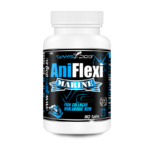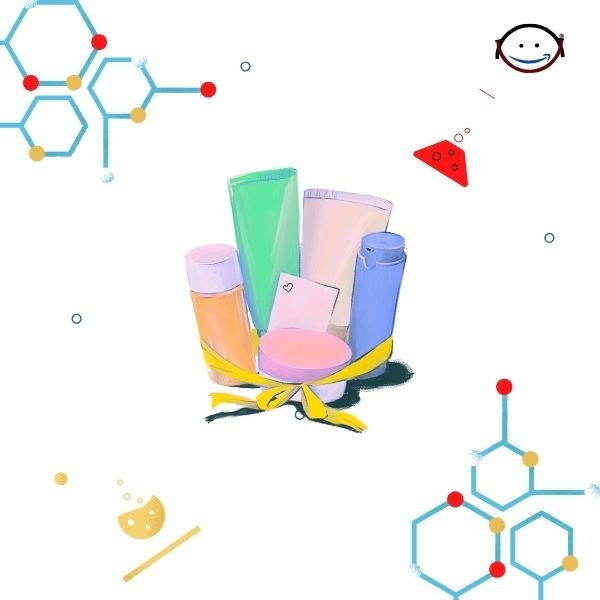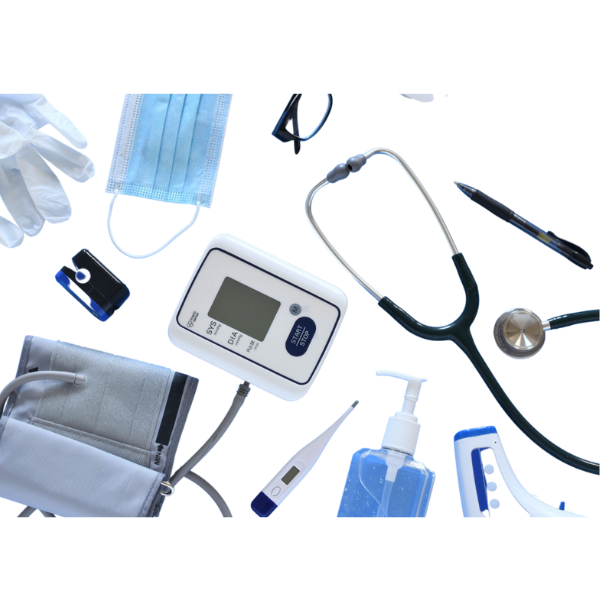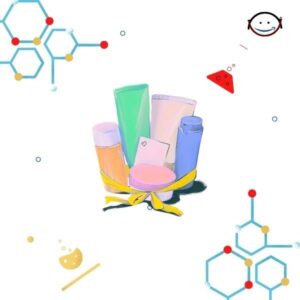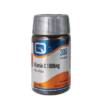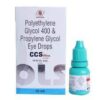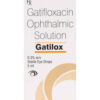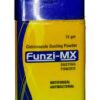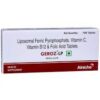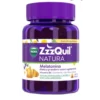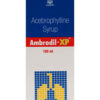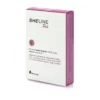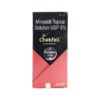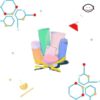-
MATNIB 100mg Tablet 10?s ₦73,100.00 QTY: 1
-
Quest Vitamin C 1000mg Timed Release - 60 Pack. ₦10,100.00 QTY: 1
-
Nesti Dante Il Frutteto Olive Oil & Tangerine Liquid Soap 500ml ₦14,400.00 QTY: 1
-
Perrigo Paracetamol 500mg Film Coated Tablets 24 Pack ₦4,200.00 QTY: 2
-
CCS ULTRA EYE 10ML DROPS ₦6,806.25 QTY: 1
-
MUCARYL AB Tablet 10?s ₦37,400.00 QTY: 2
-
RIFAKEM 550 STRIP OF 10 TABLETS ₦8,229.50 QTY: 1
-
Fitgut 1mg Tablet 10?S ₦30,600.00 QTY: 1
-
GATILOX EYE 5ML DROPS ₦1,874.50 QTY: 1
-
FUNZI MX 1% BOTTLE OF 75GM DUSTING POWDER ₦2,836.00 QTY: 1
-
GEROZ LP TABLET 10?S ₦5,156.25 QTY: 1
-
Snack Cocco Enervit Protein 8x27g ₦17,556.00 QTY: 2
-
ZZZQUIL NATURA MANGO & BAN30PAST ₦19,722.00 QTY: 2
-
CLINDAFIN N 20 GEL ₦2,681.25 QTY: 1
-
AMBRODIL XP 100ML SUSP ₦2,438.00 QTY: 2
-
SHELINE MORE MENOPAUSE 60SOFTG ₦72,029.00 QTY: 1
-
CABZORED 60 Tablet 30?s ₦678,300.00 QTY: 1
-
CHEKFALL 5% 60ML TOPICAL SOLUTION ₦16,047.50 QTY: 1
-
NON-DROWSY ATADYN SYRUP ₦0.00 QTY: 1
Customer matched zone "Lagos Delivery Options"
Sort by:
209–224 of 4627 Results
-
SaleArdance 25 mgArdance 25 mg is indicated in: As an adjunct to diet and exercise to improve glycemic control in adults with type 2 diabetes mellitus. To reduce the risk of cardiovascular death in adult patients with type 2 diabetes mellitus and established cardiovascular disease. Theropeutic ClassSodium-glucose Cotransporter-2 (SGLT2) InhibitorsPharmacologyArdance 25 mg is a sodium glucose co-transporter-2 (SGLT-2) inhibitor. SGLT2 co-transporters are responsible for reabsorption of glucose from the glomerular filtrate in the kidney. The glucuretic effect resulting from SGLT2 inhibition reduces renal absorption and lowers the renal threshold for glucose, resulting in increased glucose excretion. Additionally, it contributes to reduced hyperglycaemia, assists weight loss, and reduces blood pressure.Dosage & Administration of Ardance 25 mgThe recommended dose of Ardance 25 mg is 10 mg once daily, taken in the morning, with or without food. In patients tolerating Ardance 25 mg, the dose may be increased to 25 mg once daily. In patients with volume depletion, correcting this condition prior to initiation of Ardance 25 mg is recommended.Dosage of Ardance 25 mgThe recommended dose of Ardance 25 mg is 10 mg once daily, taken in the morning, with or without food. In patients tolerating Ardance 25 mg, the dose may be increased to 25 mg once daily. In patients with volume depletion, correcting this condition prior to initiation of Ardance 25 mg is recommended.Interaction of Ardance 25 mgDiuretics: Co-administration of Ardance 25 mg with diuretics resulted in increased urine volume.?Insulin or Insulin Secretagogues: Co-administration of Ardance 25 mg with insulin or insulin secretagogues increases the risk for hypoglycemia.?Positive Urine Glucose Test: Monitoring glycemic control with urine glucose tests is not recommended in patients taking SGLT2 inhibitors as SGLT2 inhibitors increase urinary glucose excretion and will lead to positive urine glucose tests. Use alternative methods to monitor glycemic control.?Interference with 1,5-anhydroglucitol (1,5-AG) Assay: Monitoring glycemic control with 1,5-AG assay is not recommended as measurements of 1,5-AG are unreliable in assessing glycemic control in patients taking SGLT2 inhibitors. Use alternative methods to monitor glycemic control.ContraindicationsArdance 25 mg is contraindicated in patients with history of serious hypersensitivity reaction to Ardance 25 mg or any of its ingredients, severe renal impairment, end-stage renal disease, or dialysis.Side Effects of Ardance 25 mgThe most common adverse reactions associated with Ardance 25 mg are urinary tract infections and female genital mycotic infections. Others common side effects includes dehydration, hypotension, weakness, dizziness and increased thirstiness.Pregnancy & LactationThere are no adequate and well-controlled studies of Ardance 25 mg in pregnant women. Ardance 25 mg should be used during pregnancy only if the potential benefit justifies the potential risk to the fetus. It is not known if Ardance 25 mg is excreted in human milk. It is not recommended when breastfeeding.Precautions & WarningsAssessment of renal function is recommended prior to initiation of Ardance 25 mg and periodically thereafter. Ardance 25 mg should not initiated in patients with an eGFR less than 45 ml/min/1.73 m2. No dose adjustment is needed in patients with an eGFR greater than or equal to 45 ml/min/1.73 m2.Overdose Effects of Ardance 25 mgIn the event of an overdose with Ardance 25 mg the usual supportive measures (e.g., remove unabsorbed material from the gastrointestinal tract, perform clinical monitoring, and institute supportive treatment) should be employed. Removal of Ardance 25 mg by hemodialysis has not been studied.Storage ConditionsKeep in a cool & dry place (below 30? C), protected from light & moisture. Keep out of the reach of children.Drug ClassesSodium-glucose Cotransporter-2 (SGLT2) InhibitorsMode Of ActionArdance 25 mg is a sodium glucose co-transporter-2 (SGLT-2) inhibitor. SGLT2 co-transporters are responsible for reabsorption of glucose from the glomerular filtrate in the kidney. The glucuretic effect resulting from SGLT2 inhibition reduces renal absorption and lowers the renal threshold for glucose, resulting in increased glucose excretion. Additionally, it contributes to reduced hyperglycaemia, assists weight loss, and reduces blood pressure.PregnancyThere are no adequate and well-controlled studies of Ardance 25 mg in pregnant women. Ardance 25 mg should be used during pregnancy only if the potential benefit justifies the potential risk to the fetus. It is not known if Ardance 25 mg is excreted in human milk. It is not recommended when breastfeeding.Sku: 1736101139-2600
Ardance25 mg
₦27,500.00Original price was: ₦27,500.00.₦25,300.00Current price is: ₦25,300.00.₦27,500.00Original price was: ₦27,500.00.₦25,300.00Current price is: ₦25,300.00. Add to basket Quick View -
SaleAride 100 mgAride 100 mg tablet is indicated for the treatment of acute and chronic schizophrenic disorders, in which positive symptoms (such as delusions, hallucinations, thought disorders) and/or negative symptoms (such as blunted affect, emotional and social withdrawal) are prominent, including ... Read moreAride 100 mg tablet is indicated for the treatment of acute and chronic schizophrenic disorders, in which positive symptoms (such as delusions, hallucinations, thought disorders) and/or negative symptoms (such as blunted affect, emotional and social withdrawal) are prominent, including patients characterized by predominant negative symptoms.Aride 100 mg injection is indicated in adults for: Prevention of postoperative nausea and vomiting (PONV), either alone or in combination with an antiemetic of a different class. Treatment of postoperative nausea and vomiting (PONV) in patients who have received antiemetic prophylaxis with an agent of a different class or have not received prophylaxis. Theropeutic ClassAtypical neuroleptic drugsPharmacologyAride 100 mg binds selectively to the human dopaminergic D2 and D3 receptor subtypes without any affinity for D1, D4 and D5 receptor subtypes. Unlike classical and atypical neuroleptics, Aride 100 mg displays low affinity for serotonin, ?- adrenergic, histamine receptor subtypes, muscarinic receptors and sigma sites. In the rodent, it preferentially blocks post synaptic D2 receptors located in the limbic structures as compared to those in the striatum as indicated by its reversal of d-amphetamineinduced hyperactivity without affecting stereotypies. In addition, it does not induce catalepsy and it does not produce D2 hypersensitivity after repeated treatment.Moreover, it preferentially blocks pre-synaptic D2/D3 dopamine receptors, producing dopamine release responsible for its disinhibitory effects. This atypical pharmacological profile may explain Aride 100 mg?s antipsychotic effect at higher doses through post-synaptic dopamine receptor blockade located in the limbic areas and its efficacy against negative symptoms, at lower doses, through presynaptic dopamine receptor blockade. In addition, the reduced tendency of Aride 100 mg to produce extrapyramidal side effects may be related to its preferential limbic activity.Dosage & Administration of Aride 100 mgFor acute psychotic episodes, oral doses between 400 mg/d and 800 mg/d are recommended. In individual cases, the daily dose may be increased up to 1200 mg/d. Doses above 1200 mg/d have not been extensively evaluated for safety and therefore should not be used. Doses above 800 mg/d have not been shown to be superior to lower doses and may increase the incidence of adverse events. No specific titration is required when initiating the treatment with Aride 100 mg. Doses should be adjusted according to individual response. Doses should preferably be administered before meals. Aride 100 mg should be administered twice daily for doses above 400 mg. For patients with mixed positive and negative symptoms, doses should be adjusted to obtain optimal control of positive symptoms. Maintenance treatment should be established individually with the minimally effective dose. For patients characterized by predominant negative symptoms, oral doses between 50 mg/d and 300 mg/d are recommended. Doses should be adjusted individually.Dosage of Aride 100 mgOral dose: For acute psychotic episodes, oral doses between 400 mg/d and 800 mg/d are recommended. In individual cases, the daily dose may be increased up to 1200 mg/d. Doses above 1200 mg/d have not been extensively evaluated for safety and therefore should not be used. Doses above 800 mg/d have not been shown to be superior to lower doses and may increase the incidence of adverse events. No specific titration is required when initiating the treatment with Aride 100 mg. Doses should be adjusted according to individual responses. Doses should preferably be administered before meals. Aride 100 mg should be administered twice daily for doses above 400 mg. For patients with mixed positive and negative symptoms, doses should be adjusted to obtain optimal control of positive symptoms. Maintenance treatment should be established individually with the minimally effective dose. For patients characterized by predominant negative symptoms, oral doses between 50 mg/d and 300 mg/d are recommended. Doses should be adjusted individually.Injectable dose: The recommended injectable adult dosage of Aride 100 mg and infusion rate by indication is shown in the table below: Prevention of postoperative nausea and vomiting: 5 mg as a single intravenous injection infused over 1 to 2 minutes at the time of induction of anesthesia. Treatment of postoperative nausea and vomiting: 10 mg as a single intravenous injection infused over 1 to 2 minutes in the event of nausea and/or vomiting after a surgical procedure. ContraindicationsHypersensitivity to the active ingredient or to other ingredients of the product. Concomitant prolactin-dependent tumours e.g. pituitary gland prolactinomas and breast cancer. Phaeochromocytoma. Children up to puberty. Lactation.Pregnancy & Lactationpregnancy Category C. The safety of Aride 100 mg during human pregnancy has not been established, and therefore use of Aride 100 mg is not recommended during pregnancy and in women of child bearing potential not using effective contraception, unless the benefits justify the potential risks and the administered dose and duration of treatment should be as low and as short as possible. Aride 100 mg has been found in the breast milk of treated women. Breast-feeding is contraindicated.Precautions & WarningsNeuroleptic Malignant Syndrome (NMS) is a potentially fatal syndrome that has been reported in association with anti psychotic medicines, including Aride 100 mg. Neuroleptic malignant syndrome is characterised by hyperthermia, muscle rigidity, autonomic instability, and elevated CPK, may occur. In the event of any symptoms which could suggest NMS, in particular hyperthermia, particularly with high daily doses, all antipsychotic medicines including Aride 100 mg should be discontinued. Aride 100 mg can lower the seizure threshold. Therefore patients with a history of seizures should be closely monitored during Aride 100 mg therapy.Storage ConditionsKeep below 30?C temperature, away from light & moisture. Keep out of the reach of children.Use In Special PopulationsElderly: Aride 100 mg should be used with particular caution because of a possible risk of hypotension or sedation.Children: The efficacy and safety of Aride 100 mg from puberty to the age of 18 years have not been established: there are limited data available on the use of Aride 100 mg in adolescents in schizophrenia. Therefore, the use of Aride 100 mg from puberty to the age of 18 years is not recommended. In children up to puberty, the use of Aride 100 mg is contraindicatedUse in hepatic impairment: The impact of hepatic impairment on hepatic metabolism and hepato-biliary excretion of Aride 100 mg has not been studied. Aride 100 mg should be used with caution in patients with moderate or severe hepatic impairment.Use in renal impairment: Aride 100 mg is eliminated by the renal route. In cases of renal insufficiency, the dose should be decreased and intermittent treatment should be consideredDrug ClassesAtypical neuroleptic drugsMode Of ActionAride 100 mg binds selectively to the human dopaminergic D2 and D3 receptor subtypes without any affinity for D1, D4 and D5 receptor subtypes. Unlike classical and atypical neuroleptics, Aride 100 mg displays low affinity for serotonin, ?- adrenergic, histamine receptor subtypes, muscarinic receptors and sigma sites. In the rodent, it preferentially blocks post synaptic D2 receptors located in the limbic structures as compared to those in the striatum as indicated by its reversal of d-amphetamineinduced hyperactivity without affecting stereotypies. In addition, it does not induce catalepsy and it does not produce D2 hypersensitivity after repeated treatment.Moreover, it preferentially blocks pre-synaptic D2/D3 dopamine receptors, producing dopamine release responsible for its disinhibitory effects. This atypical pharmacological profile may explain Aride 100 mg?s antipsychotic effect at higher doses through post-synaptic dopamine receptor blockade located in the limbic areas and its efficacy against negative symptoms, at lower doses, through presynaptic dopamine receptor blockade. In addition, the reduced tendency of Aride 100 mg to produce extrapyramidal side effects may be related to its preferential limbic activity.Pregnancypregnancy Category C. The safety of Aride 100 mg during human pregnancy has not been established, and therefore use of Aride 100 mg is not recommended during pregnancy and in women of child bearing potential not using effective contraception, unless the benefits justify the potential risks and the administered dose and duration of treatment should be as low and as short as possible. Aride 100 mg has been found in the breast milk of treated women. Breast-feeding is contraindicated.Pediatric UsesElderly: Aride 100 mg should be used with particular caution because of a possible risk of hypotension or sedation.Children: The efficacy and safety of Aride 100 mg from puberty to the age of 18 years have not been established: there are limited data available on the use of Aride 100 mg in adolescents in schizophrenia. Therefore, the use of Aride 100 mg from puberty to the age of 18 years is not recommended. In children up to puberty, the use of Aride 100 mg is contraindicatedUse in hepatic impairment: The impact of hepatic impairment on hepatic metabolism and hepato-biliary excretion of Aride 100 mg has not been studied. Aride 100 mg should be used with caution in patients with moderate or severe hepatic impairment.Use in renal impairment: Aride 100 mg is eliminated by the renal route. In cases of renal insufficiency, the dose should be decreased and intermittent treatment should be consideredSku: 1736096177-1142
Aride100 mg
₦16,500.00Original price was: ₦16,500.00.₦14,850.00Current price is: ₦14,850.00.₦16,500.00Original price was: ₦16,500.00.₦14,850.00Current price is: ₦14,850.00. Add to basket Quick View -
SaleAripra 10 mgAripra 10 mg is indicated for- Schizophrenia Schizoaffective disorder Acute manic and mixed episodes associated with Bipolar I Disorder Maintaining efficacy in patients with Bipolar I Disorder who are stabilized Theropeutic ClassAtypical neuroleptic drugsPharmacologyAripra 10 mg is an atypical antipsychotic that has both dopamine and serotonin receptors activity. It is a partial agonist of dopamine D2 receptors that relieves the symptoms of schizophrenia. It is characterized as a dopamine system stabilizer. It is a potent partial agonist at serotonin 5-HT1A receptors and antagonist at 5-HT2A receptors. This is associated with improvement of depressive, cognitive and negative symptoms.Dosage & Administration of Aripra 10 mgFor Schizophrenia: 10 to 15 mg, once daily, without regard to food. Dose increment should not be made before 2 weeks, the time needed to achieve steady state.For Bipolar mania:?30 mg, once daily, without regard to food.Dosage of Aripra 10 mgFor Schizophrenia: 10 to 15 mg, once daily, without regard to food. Dose increment should not be made before 2 weeks, the time needed to achieve steady state.For Bipolar mania:?30 mg, once daily, without regard to food.Interaction of Aripra 10 mgCaution should be exercised when aripipazole is taken in combination with other centrally acting drugs and alcohol. Carbamazepine could cause an increase in Aripra 10 mg clearance and lower blood levels. Ketoconazole, quinidine, fluoxetine or paroxetine can inhibit Aripra 10 mg elimination and cause increased blood levels.ContraindicationsAripra 10 mg is contraindicated in patients who are hypersensitive to it or to any component of this product.Side Effects of Aripra 10 mgHeadache, constipation, asthenia, nausea, dyspepsia, vomiting, coughing, abdominal pain.Pregnancy & LactationAripra 10 mg should not be used in pregnancy as no human trial is performed. Patients should be advised not to breast feed an infant if they are taking Aripra 10 mg.Precautions & WarningsAripra 10 mg may be associated with orthostatic hypotension (orthostatic lightheadedness).Aripra 10 mg should be used with caution in patients with known cardiovascular disease (myocardial infarction or ischaemic heart disease, heart failure or conduction abnormalities), cerebrovascular disease, or conditions that would predispose patients to hypotension (dehydration, hypovolemia, and treatment with antihypertensive medications).Seizures occurred in Aripra 10 mg-treated patients. As with other antipsychotic drugs, Aripra 10 mg should be used cautiously in patients with Alzheimer's dementia.Aripra 10 mg is not approved for the treatment of patients with dementia-related psychosis.Overdose Effects of Aripra 10 mgAripra 10 mg at doses up to 1080 mg causes no fatalities. The signs and symptoms observed with Aripra 10 mg overdose included nausea, vomiting, asthenia, diarrhea, and somnolence.Drug ClassesAtypical neuroleptic drugsMode Of ActionAripra 10 mg is an atypical antipsychotic that has both dopamine and serotonin receptors activity. It is a partial agonist of dopamine D2 receptors that relieves the symptoms of schizophrenia. It is characterized as a dopamine system stabilizer. It is a potent partial agonist at serotonin 5-HT1A receptors and antagonist at 5-HT2A receptors. This is associated with improvement of depressive, cognitive and negative symptoms.PregnancyAripra 10 mg should not be used in pregnancy as no human trial is performed. Patients should be advised not to breast feed an infant if they are taking Aripra 10 mg.Sku: 1736103068-3161
Aripra10 mg
₦275.00Original price was: ₦275.00.₦247.50Current price is: ₦247.50. -
SaleAripra 15 mgAripra 15 mg is indicated for- Schizophrenia Schizoaffective disorder Acute manic and mixed episodes associated with Bipolar I Disorder Maintaining efficacy in patients with Bipolar I Disorder who are stabilized Theropeutic ClassAtypical neuroleptic drugsPharmacologyAripra 15 mg is an atypical antipsychotic that has both dopamine and serotonin receptors activity. It is a partial agonist of dopamine D2 receptors that relieves the symptoms of schizophrenia. It is characterized as a dopamine system stabilizer. It is a potent partial agonist at serotonin 5-HT1A receptors and antagonist at 5-HT2A receptors. This is associated with improvement of depressive, cognitive and negative symptoms.Dosage & Administration of Aripra 15 mgFor Schizophrenia: 10 to 15 mg, once daily, without regard to food. Dose increment should not be made before 2 weeks, the time needed to achieve steady state.For Bipolar mania:?30 mg, once daily, without regard to food.Dosage of Aripra 15 mgFor Schizophrenia: 10 to 15 mg, once daily, without regard to food. Dose increment should not be made before 2 weeks, the time needed to achieve steady state.For Bipolar mania:?30 mg, once daily, without regard to food.Interaction of Aripra 15 mgCaution should be exercised when aripipazole is taken in combination with other centrally acting drugs and alcohol. Carbamazepine could cause an increase in Aripra 15 mg clearance and lower blood levels. Ketoconazole, quinidine, fluoxetine or paroxetine can inhibit Aripra 15 mg elimination and cause increased blood levels.ContraindicationsAripra 15 mg is contraindicated in patients who are hypersensitive to it or to any component of this product.Side Effects of Aripra 15 mgHeadache, constipation, asthenia, nausea, dyspepsia, vomiting, coughing, abdominal pain.Pregnancy & LactationAripra 15 mg should not be used in pregnancy as no human trial is performed. Patients should be advised not to breast feed an infant if they are taking Aripra 15 mg.Precautions & WarningsAripra 15 mg may be associated with orthostatic hypotension (orthostatic lightheadedness).Aripra 15 mg should be used with caution in patients with known cardiovascular disease (myocardial infarction or ischaemic heart disease, heart failure or conduction abnormalities), cerebrovascular disease, or conditions that would predispose patients to hypotension (dehydration, hypovolemia, and treatment with antihypertensive medications).Seizures occurred in Aripra 15 mg-treated patients. As with other antipsychotic drugs, Aripra 15 mg should be used cautiously in patients with Alzheimer's dementia.Aripra 15 mg is not approved for the treatment of patients with dementia-related psychosis.Overdose Effects of Aripra 15 mgAripra 15 mg at doses up to 1080 mg causes no fatalities. The signs and symptoms observed with Aripra 15 mg overdose included nausea, vomiting, asthenia, diarrhea, and somnolence.Drug ClassesAtypical neuroleptic drugsMode Of ActionAripra 15 mg is an atypical antipsychotic that has both dopamine and serotonin receptors activity. It is a partial agonist of dopamine D2 receptors that relieves the symptoms of schizophrenia. It is characterized as a dopamine system stabilizer. It is a potent partial agonist at serotonin 5-HT1A receptors and antagonist at 5-HT2A receptors. This is associated with improvement of depressive, cognitive and negative symptoms.PregnancyAripra 15 mg should not be used in pregnancy as no human trial is performed. Patients should be advised not to breast feed an infant if they are taking Aripra 15 mg.Sku: 1736100564-2424
Aripra15 mg
₦385.00Original price was: ₦385.00.₦346.50Current price is: ₦346.50. -
SaleAriprazole 5 mgAriprazole 5 mg is indicated for- Schizophrenia Schizoaffective disorder Acute manic and mixed episodes associated with Bipolar I Disorder Maintaining efficacy in patients with Bipolar I Disorder who are stabilized Theropeutic ClassAtypical neuroleptic drugsPharmacologyAriprazole 5 mg is an atypical antipsychotic that has both dopamine and serotonin receptors activity. It is a partial agonist of dopamine D2 receptors that relieves the symptoms of schizophrenia. It is characterized as a dopamine system stabilizer. It is a potent partial agonist at serotonin 5-HT1A receptors and antagonist at 5-HT2A receptors. This is associated with improvement of depressive, cognitive and negative symptoms.Dosage & Administration of Ariprazole 5 mgFor Schizophrenia: 10 to 15 mg, once daily, without regard to food. Dose increment should not be made before 2 weeks, the time needed to achieve steady state.For Bipolar mania:?30 mg, once daily, without regard to food.Dosage of Ariprazole 5 mgFor Schizophrenia: 10 to 15 mg, once daily, without regard to food. Dose increment should not be made before 2 weeks, the time needed to achieve steady state.For Bipolar mania:?30 mg, once daily, without regard to food.Interaction of Ariprazole 5 mgCaution should be exercised when aripipazole is taken in combination with other centrally acting drugs and alcohol. Carbamazepine could cause an increase in Ariprazole 5 mg clearance and lower blood levels. Ketoconazole, quinidine, fluoxetine or paroxetine can inhibit Ariprazole 5 mg elimination and cause increased blood levels.ContraindicationsAriprazole 5 mg is contraindicated in patients who are hypersensitive to it or to any component of this product.Side Effects of Ariprazole 5 mgHeadache, constipation, asthenia, nausea, dyspepsia, vomiting, coughing, abdominal pain.Pregnancy & LactationAriprazole 5 mg should not be used in pregnancy as no human trial is performed. Patients should be advised not to breast feed an infant if they are taking Ariprazole 5 mg.Precautions & WarningsAriprazole 5 mg may be associated with orthostatic hypotension (orthostatic lightheadedness).Ariprazole 5 mg should be used with caution in patients with known cardiovascular disease (myocardial infarction or ischaemic heart disease, heart failure or conduction abnormalities), cerebrovascular disease, or conditions that would predispose patients to hypotension (dehydration, hypovolemia, and treatment with antihypertensive medications).Seizures occurred in Ariprazole 5 mg-treated patients. As with other antipsychotic drugs, Ariprazole 5 mg should be used cautiously in patients with Alzheimer's dementia.Ariprazole 5 mg is not approved for the treatment of patients with dementia-related psychosis.Overdose Effects of Ariprazole 5 mgAriprazole 5 mg at doses up to 1080 mg causes no fatalities. The signs and symptoms observed with Ariprazole 5 mg overdose included nausea, vomiting, asthenia, diarrhea, and somnolence.Drug ClassesAtypical neuroleptic drugsMode Of ActionAriprazole 5 mg is an atypical antipsychotic that has both dopamine and serotonin receptors activity. It is a partial agonist of dopamine D2 receptors that relieves the symptoms of schizophrenia. It is characterized as a dopamine system stabilizer. It is a potent partial agonist at serotonin 5-HT1A receptors and antagonist at 5-HT2A receptors. This is associated with improvement of depressive, cognitive and negative symptoms.PregnancyAriprazole 5 mg should not be used in pregnancy as no human trial is performed. Patients should be advised not to breast feed an infant if they are taking Ariprazole 5 mg.Sku: 1736103340-3238
Ariprazole5 mg
₦1,936.00Original price was: ₦1,936.00.₦1,742.40Current price is: ₦1,742.40.₦1,936.00Original price was: ₦1,936.00.₦1,742.40Current price is: ₦1,742.40. Add to basket Quick View -
SaleAriprex 10 mgAriprex 10 mg is indicated for- Schizophrenia Schizoaffective disorder Acute manic and mixed episodes associated with Bipolar I Disorder Maintaining efficacy in patients with Bipolar I Disorder who are stabilized Theropeutic ClassAtypical neuroleptic drugsPharmacologyAriprex 10 mg is an atypical antipsychotic that has both dopamine and serotonin receptors activity. It is a partial agonist of dopamine D2 receptors that relieves the symptoms of schizophrenia. It is characterized as a dopamine system stabilizer. It is a potent partial agonist at serotonin 5-HT1A receptors and antagonist at 5-HT2A receptors. This is associated with improvement of depressive, cognitive and negative symptoms.Dosage & Administration of Ariprex 10 mgFor Schizophrenia: 10 to 15 mg, once daily, without regard to food. Dose increment should not be made before 2 weeks, the time needed to achieve steady state.For Bipolar mania:?30 mg, once daily, without regard to food.Dosage of Ariprex 10 mgFor Schizophrenia: 10 to 15 mg, once daily, without regard to food. Dose increment should not be made before 2 weeks, the time needed to achieve steady state.For Bipolar mania:?30 mg, once daily, without regard to food.Interaction of Ariprex 10 mgCaution should be exercised when aripipazole is taken in combination with other centrally acting drugs and alcohol. Carbamazepine could cause an increase in Ariprex 10 mg clearance and lower blood levels. Ketoconazole, quinidine, fluoxetine or paroxetine can inhibit Ariprex 10 mg elimination and cause increased blood levels.ContraindicationsAriprex 10 mg is contraindicated in patients who are hypersensitive to it or to any component of this product.Side Effects of Ariprex 10 mgHeadache, constipation, asthenia, nausea, dyspepsia, vomiting, coughing, abdominal pain.Pregnancy & LactationAriprex 10 mg should not be used in pregnancy as no human trial is performed. Patients should be advised not to breast feed an infant if they are taking Ariprex 10 mg.Precautions & WarningsAriprex 10 mg may be associated with orthostatic hypotension (orthostatic lightheadedness).Ariprex 10 mg should be used with caution in patients with known cardiovascular disease (myocardial infarction or ischaemic heart disease, heart failure or conduction abnormalities), cerebrovascular disease, or conditions that would predispose patients to hypotension (dehydration, hypovolemia, and treatment with antihypertensive medications).Seizures occurred in Ariprex 10 mg-treated patients. As with other antipsychotic drugs, Ariprex 10 mg should be used cautiously in patients with Alzheimer's dementia.Ariprex 10 mg is not approved for the treatment of patients with dementia-related psychosis.Overdose Effects of Ariprex 10 mgAriprex 10 mg at doses up to 1080 mg causes no fatalities. The signs and symptoms observed with Ariprex 10 mg overdose included nausea, vomiting, asthenia, diarrhea, and somnolence.Drug ClassesAtypical neuroleptic drugsMode Of ActionAriprex 10 mg is an atypical antipsychotic that has both dopamine and serotonin receptors activity. It is a partial agonist of dopamine D2 receptors that relieves the symptoms of schizophrenia. It is characterized as a dopamine system stabilizer. It is a potent partial agonist at serotonin 5-HT1A receptors and antagonist at 5-HT2A receptors. This is associated with improvement of depressive, cognitive and negative symptoms.PregnancyAriprex 10 mg should not be used in pregnancy as no human trial is performed. Patients should be advised not to breast feed an infant if they are taking Ariprex 10 mg.Sku: 1736103961-3418
Ariprex10 mg
₦275.00Original price was: ₦275.00.₦247.50Current price is: ₦247.50. -
SaleAriprex 2 mgAriprex 2 mg is indicated for- Schizophrenia Schizoaffective disorder Acute manic and mixed episodes associated with Bipolar I Disorder Maintaining efficacy in patients with Bipolar I Disorder who are stabilized Theropeutic ClassAtypical neuroleptic drugsPharmacologyAriprex 2 mg is an atypical antipsychotic that has both dopamine and serotonin receptors activity. It is a partial agonist of dopamine D2 receptors that relieves the symptoms of schizophrenia. It is characterized as a dopamine system stabilizer. It is a potent partial agonist at serotonin 5-HT1A receptors and antagonist at 5-HT2A receptors. This is associated with improvement of depressive, cognitive and negative symptoms.Dosage & Administration of Ariprex 2 mgFor Schizophrenia: 10 to 15 mg, once daily, without regard to food. Dose increment should not be made before 2 weeks, the time needed to achieve steady state.For Bipolar mania:?30 mg, once daily, without regard to food.Dosage of Ariprex 2 mgFor Schizophrenia: 10 to 15 mg, once daily, without regard to food. Dose increment should not be made before 2 weeks, the time needed to achieve steady state.For Bipolar mania:?30 mg, once daily, without regard to food.Interaction of Ariprex 2 mgCaution should be exercised when aripipazole is taken in combination with other centrally acting drugs and alcohol. Carbamazepine could cause an increase in Ariprex 2 mg clearance and lower blood levels. Ketoconazole, quinidine, fluoxetine or paroxetine can inhibit Ariprex 2 mg elimination and cause increased blood levels.ContraindicationsAriprex 2 mg is contraindicated in patients who are hypersensitive to it or to any component of this product.Side Effects of Ariprex 2 mgHeadache, constipation, asthenia, nausea, dyspepsia, vomiting, coughing, abdominal pain.Pregnancy & LactationAriprex 2 mg should not be used in pregnancy as no human trial is performed. Patients should be advised not to breast feed an infant if they are taking Ariprex 2 mg.Precautions & WarningsAriprex 2 mg may be associated with orthostatic hypotension (orthostatic lightheadedness).Ariprex 2 mg should be used with caution in patients with known cardiovascular disease (myocardial infarction or ischaemic heart disease, heart failure or conduction abnormalities), cerebrovascular disease, or conditions that would predispose patients to hypotension (dehydration, hypovolemia, and treatment with antihypertensive medications).Seizures occurred in Ariprex 2 mg-treated patients. As with other antipsychotic drugs, Ariprex 2 mg should be used cautiously in patients with Alzheimer's dementia.Ariprex 2 mg is not approved for the treatment of patients with dementia-related psychosis.Overdose Effects of Ariprex 2 mgAriprex 2 mg at doses up to 1080 mg causes no fatalities. The signs and symptoms observed with Ariprex 2 mg overdose included nausea, vomiting, asthenia, diarrhea, and somnolence.Drug ClassesAtypical neuroleptic drugsMode Of ActionAriprex 2 mg is an atypical antipsychotic that has both dopamine and serotonin receptors activity. It is a partial agonist of dopamine D2 receptors that relieves the symptoms of schizophrenia. It is characterized as a dopamine system stabilizer. It is a potent partial agonist at serotonin 5-HT1A receptors and antagonist at 5-HT2A receptors. This is associated with improvement of depressive, cognitive and negative symptoms.PregnancyAriprex 2 mg should not be used in pregnancy as no human trial is performed. Patients should be advised not to breast feed an infant if they are taking Ariprex 2 mg.Sku: 1736102825-3094
Ariprex2 mg
₦110.00Original price was: ₦110.00.₦99.00Current price is: ₦99.00. -
SaleAristen 1%The confirmed indication for Aristen 1%?include: All dermatomycoses due to dermatophytes (e.g. Trichophyton species). All dermatomycoses due to yeasts (Candida species). Dermatomycoses due to moulds and other fungi. Skin diseases showing superinfections with these fungi. To the dermatomycoses listed under 1-4 belong for example, interdigital myocoses (e.g. athlete?s foot), paronychias (associated with nail mycoses), myocoses in skin folds, Candida vulvitis, Candida balanitis, Pityriasis versicolor, erythrasma.Theropeutic ClassDrugs for subcutaneous and mycoses, Topical Antifungal preparationsPharmacologyAristen 1% is a broad spectrum antifungal. It also exhibits activity against Trichomonus, Staphylococci, Streptococci and Bacteroides. Aristen 1% kills fungi and yeasts by interfering with their cell membranes. It works by stopping the production of ergosterol, which is an essential component of fungal cell membranes resulting in increased membrane permeability and leakage of essential constituents of the fungal cells.Dosage & Administration of Aristen 1%Wash skin with soap and water and dry thoroughly. Apply a thin layer of the cream or solution 2-3 times daily and gently massage over affected area as directed by the doctor. For Athlete?s foot, pay special attention to the spaces between the toes. Best results in Athlete's foot and ringworm are usually obtained with 4 weeks use of this product. The cream should be applied two or three times daily for one month or for at least two weeks after the disappearance of all signs of infection. If satisfactory results have not occurred within these times consultation with doctor is essential. For best results, follow directions and continue treatment for length of time indicated. The duration of treatment varies; it depends among other factors on the extent and localization of the disease.Recommended duration of treatment : Dermatomycoses: 3-4 weeks Candida vulvitis and candida balanitis: 1-2 weeks Erythrasma and pityriasis versicolor (approx.): 3 weeks In fungal infection of the feet, to prevent relapses:?Treatment should be continued for about 2 weeks beyond the disappearance of all signs of disease. Aristen 1% cream is odourless, can be washed off and does not stain.ContraindicationsHypersensitivity to Aristen 1%.Side Effects of Aristen 1%Aristen 1% is generally well tolerated after local application but the few side effects have been reported infrequently like erythema, stinging, blistering, peeling, oedema, pruritus, urticaria and general irritation.Pregnancy & LactationPregnancy?Category B. Aristen 1% is recommended during pregnancy only after first consulting a doctor.Lactation: Because systemic absorption of Aristen 1% following topical application is marginal, there should be no risk for the infant during lactation.Precautions & WarningsIf local intolerance develops, consider withdrawal of the medicine and institution of appropriate therapy. Aristen 1% solution is not intended for ophthalmic use.Overdose Effects of Aristen 1%Supportive measures should be taken incase of accidental oral ingestion.Storage ConditionsStore at a cool and dry place. Protect from light. Do not freeze.Duration Of TreatmentFor the treatment to become a complete success, reliable and sufficiently long application of Aristen 1% cream is important. The duration of treatment varies; it depends among other factors on the extent and localisation of the disease.Sku: 1736092834-304
Aristen1%
₦4,400.00Original price was: ₦4,400.00.₦4,004.00Current price is: ₦4,004.00.₦4,400.00Original price was: ₦4,400.00.₦4,004.00Current price is: ₦4,004.00. Add to basket Quick View -
SaleAristocort Plus 1%+0.1%Econazole Nitrate & Triamcinolone Acetonide indicated for the treatment of: Eczematous Mycoses Psoriasis Tinea Pedis (Athlete?s foot) Tinea Corporis (Ring worm) Tinea Cruris (Jock itch) Inflammatory Intertrigo Diaper Dermatitis ... Read moreEconazole Nitrate & Triamcinolone Acetonide indicated for the treatment of: Eczematous Mycoses Psoriasis Tinea Pedis (Athlete?s foot) Tinea Corporis (Ring worm) Tinea Cruris (Jock itch) Inflammatory Intertrigo Diaper Dermatitis Onychomycoses- for the treatment of onychomycoses, local therapy with Econazole/Triamcinolone cream, combined with an oral antimycotic, is recommended.Theropeutic ClassTriamcinolone & Combined preparationsPharmacologyEconazole Nitrate: Econazole modifies the permeability of cell wall membrane in fungi; may interfere with RNA and protein synthesis, and lipid metabolism.Triamcinolone has mainly glucocorticoid activity. It suppresses the migration of polymorphonuclear leukocytes and reduces capillary permeability thereby decreasing inflammation.Dosage & Administration of Aristocort Plus 1%+0.1%Adults: Apply twice daily to the affected area and rub on the skin gently with the finger. Continue the applications for 14 days or as directed by the doctor.Children: Suitable for topical application to children.For topical administration only.Dosage of Aristocort Plus 1%+0.1%Adults: This cream should be applied sparingly to the skin lesion no more than 2 times daily, preferably once in the morning and once in the evening. This cream should not be applied with an occlusive dressing, or to large areas of skin on the body. The duration of treatment with this cream should continue until the inflammatory symptoms subside but not longer than 2 weeks; after 2 weeks of therapy with this cream, continue therapy as needed with a preparation containing econazole or econazole nitrate alone.Pediatric Use: Pediatric patients may demonstrate greater susceptibility to topical corticosteroid-induced HPA axis suppression and Cushing's syndrome than mature patients because of a larger skin surface area to body weight. Caution should be exercised.Interaction of Aristocort Plus 1%+0.1%Econazole: compound metabolized by CYP3A4/2C9 oral anticoagulants (warfarin & acenocoumarol).Triamcinolone: lowering of plasma salicylates levels. Increased risk of Gl bleeding and ulceration with NSAIDs. Antagonised blood glucose-lowering effects of the antidiabetics. Increased risk of Hyperkalemia with amphotericin B, beta-blockers, potassium-depleting diuretics, theophylline. Increased clearance of the triamcinolone with ciclosporin, carbamazepine, phenytoin, barbiturate, rifampicin.ContraindicationsThis Cream is contraindicated- In individuals who have shown hypersensitivity to any of its ingredients. Like any other dermatological preparation containing corticosteroids, this Cream is contraindicated in specific skin conditions such as tuberculous, varicella, herpes simplex or other viral infections of the skin, or fresh vaccination sites. Decubitus ulcers: Viral, bacterial or fungal skin infections (e.g. tuberculosis of the skin, syphilis of the skin, herpes simplex, herpes zoster, chickenpox). Rosacea and rosacea-like dermatitis. Side Effects of Aristocort Plus 1%+0.1%Rarely, transient local mild irritation, itching & redness may occur immediately after application. Econazole has the minimal allergenic effect and is well tolerated, even by delicate skin. Adrenal suppression on long term continuous topical steroid therapy may occur, particularly in infants or children, or when occlusive dressings are applied. It should be noted that an infant's napkin may act as an occlusive dressing.Pregnancy & LactationPregnancy: Not the Econazole but the Triamcinolone Acetonide crosses the placenta and topical administration of corticosteroids to pregnant animals can cause abnormalities of foetal development. The relevance of this finding to human beings has not been established. However, topical steroids in large amounts or for prolonged periods should not be used in pregnancy.Lactation: Negligible amount of econazole and to some extent Triamcinolone may be excreted in small amounts in breast milk. So, this cream should not be prescribed to the lactating mother or if prescribed lactation should be withheld during treatment.Precautions & Warnings For external use only. This Cream is not for ophthalmic or oral use. If a reaction suggesting hypersensitivity or chemical irritation should occur, use of the medication should be discontinued. Corticosteroids applied to the skin can be absorbed in sufficient amounts to produce systemic effects, including adrenal suppression. Systemic absorption may be increased by various factors such as application over a large skin surface area, application to damaged skin, application under occlusive skin dressings and prolonged duration of therapy. Topical corticosteroids are associated with skin thinning and atrophy, striae, telangiectasis and purpura. Topical corticosteroids may lead to increased risk of dermatological superinfection or opportunistic infection. Children: Increased caution is required when treating children. Compared to adults, the nature of a child's skin and the larger skin surface area relative to body weight may lead to an increased absorption of the corticosteroid via the child's skin. This cream should be used in children only for short periods of time (less than 2 weeks) and on small areas (less than 10% of body surface area).Visual disturbance may be associated with systemic and topical corticosteroid use. If a patient presents with symptoms such as blurred vision or other visual disturbances, the patient should be considered for referral to an ophthalmologist for evaluation of possible causes which may include cataract, glaucoma or rare diseases such as central serous chorioretinopathy (CSCR).Overdose Effects of Aristocort Plus 1%+0.1%This Cream is for cutaneous application only. Corticosteroids applied to the skin, including triamcinolone, can be absorbed in sufficient amounts to produce systemic effects. In the event of accidental ingestion, treat symptomatically. If this cream is accidentally applied to the eyes, wash with clean water or saline and seek medical attention if symptoms persist.Storage ConditionsStore in a cool (below 30?C) and dry place, away from light. Keep out of the reach of children.Drug ClassesTriamcinolone & Combined preparationsPregnancyPregnancy: Not the Econazole but the Triamcinolone Acetonide crosses the placenta and topical administration of corticosteroids during pregnancy can cause abnormalities of foetal development. The relevance of this finding to human beings has not been established. However, topical steroids in large amounts or for prolonged periodsshould not be used in pregnancy.Lactation: Negligible amount of econazole and to some extent Triamcinolone may be excreted in small amounts in breast milk. So this cream should not be prescribed to the lactating mother or if prescribed lactation should be withheld during treatment.Sku: 1736100367-2364
Aristocort Plus1%+0.1%
₦2,200.00Original price was: ₦2,200.00.₦2,002.00Current price is: ₦2,002.00.₦2,200.00Original price was: ₦2,200.00.₦2,002.00Current price is: ₦2,002.00. Add to basket Quick View -
SaleAristocort 0.1%Post-traumatic osteoarthritis, synovitis of osteoarthritis, rheumatoid arthritis, acute and sub-acute bursitis, epicondylitis, acute non-specific tenosynovitis, acute gouty arthritis, psoriatic arthritis, ankylosing spondylitis, juvenile rheumatoid arthritis, pemphigus, severe erythema multiforme (Stevens-Johnson syndrome), exfoliative dermatitis, bullous dermatitis herpetiformis, severe seborrheic dermatitis, severe psoriasis, bronchial asthma, contact dermatitis, atopic dermatitis, seasonal or perennial allergic rhinitis.Theropeutic ClassCorticosteroid, Glucocorticoids, Triamcinolone & Combined preparationsPharmacologyThe antiinflammatory actions of corticosteroids are thought to involve lipocortins, phospholipase A2 inhibitory proteins which, through inhibition of arachidonic acid, control the biosynthesis of prostaglandins and leukotrienes. Firstly, however, these glucocorticoids bind to the glucocorticoid receptors which translocate into the nucleus and bind DNA (GRE) and change genetic expression both positively and negatively. The immune system is suppressed by corticosteroids due to a decrease in the function of the lymphatic system, a reduction in immunoglobulin and complement concentrations, the precipitation of lymphocytopenia, and interference with antigen-antibody binding.Dosage & Administration of Aristocort 0.1%Adults and children over 12 years of age: Initial dose is 60 mg. Dosage is usually adjusted within the range of 40 to 80 mg. For local areas, dose for adults is up to 10 mg for smaller areas and up to 40 mg for larger areas.Children 6 to 12 years: Initial dose is 40 mgInteraction of Aristocort 0.1%Aminoglutethimide: Aminoglutethimide may lead to a loss of corticosteroid-induced adrenal suppression.?Amphotericin B injection and potassium-depleting agents: When corticosteroids are administered concomitantly with potassium-depleting agents (ie, amphotericin B, diuretics), patients should be observed closely for development of hypokalemia. There have been cases reported in which concomitant use of amphotericin B and hydrocortisone was followed by cardiac enlargement and congestive heart failure.?Antibiotics: Macrolide antibiotics have been reported to cause a significant decrease in corticosteroid clearance.?Anticholinesterases: Concomitant use of anticholinesterase agents and corticosteroids may produce severe weakness in patients with myasthenia gravis. If possible, anticholinesterase agents should be withdrawn at least 24 hours before initiating corticosteroid therapy.?Anticoagulants, oral: Coadministration of corticosteroids and warfarin usually results in inhibition of response to warfarin, although there have been some conflicting reports. Therefore, coagulation indices should be monitored frequently to maintain the desired anticoagulant effect.?Antidiabetics: Because corticosteroids may increase blood glucose concentrations, dosage adjustments of antidiabetic agents may be required.?Antitubercular drugs: Serum concentrations of isoniazid may be decreased.?Cholestyramine: Cholestyramine may increase the clearance of corticosteroids.?Cyclosporine: Increased activity of both cyclosporine and corticosteroids may occur when the two are used concurrently. Convulsions have been reported with this concurrent use.?Digitalis glycosides: Patients on digitalis glycosides may be at increased risk of arrhythmias due to hypokalemia.?Estrogens, including oral contraceptives: Estrogens may decrease the hepatic metabolism of certain corticosteroids, thereby increasing their effect.?Hepatic enzyme inducers (eg, barbiturates, phenytoin, carbamazepine, rifampin): Drugs which induce hepatic microsomal drug metabolizing enzyme activity may enhance the metabolism of corticosteroids and require that the dosage of the corticosteroid be increased.?Ketoconazole: Ketoconazole has been reported to decrease the metabolism of certain corticosteroids by up to 60%, leading to an increased risk of corticosteroid side effects.?Nonsteroidal anti-inflammatory drugs (NSAIDs): Concomitant use of aspirin (or other nonsteroidal anti-inflammatory drugs) and corticosteroids increases the risk of gastrointestinal side effects. Aspirin should be used cautiously in conjunction with corticosteroids in hypoprothrombinemia. The clearance of salicylates may be increased with concurrent use of corticosteroids.?Skin tests: Corticosteroids may suppress reactions to skin tests.?Vaccines: Patients on prolonged corticosteroid therapy may exhibit a diminished response to toxoids and live or inactivated vaccines due to inhibition of antibody response. Corticosteroids may also potentiate the replication of some organisms contained in live attenuated vaccines. Routine administration of vaccines or toxoids should be deferred until corticosteroid therapy is discontinued if possible.ContraindicationsAristocort 0.1% injection is contraindicated in patients with a sensitivity to the active or inactive ingredients.Side Effects of Aristocort 0.1%Cushingoid syndrome, weakness, bruising or purpura, aggravation of infections, peptic ulcer, activation of latent or aggravation of existing diabetes, altered menstrual cycle, hirsutism.Pregnancy & LactationAristocort 0.1% injection should be used during pregnancy, nursing mothers if the possible benefits of the medication justify the potential hazards to the fetus or nursing infant.Precautions & WarningsAristocort 0.1% injection should be used cautiously in patients with ocular herpes simplex, nonspecific ulcerative colitis, active or latent peptic ulcer, renal insufficiency, hypertension, osteoporosis, Cushing's syndrome, diabetes mellitus, congestive heart failure, chronic nephritis.Overdose Effects of Aristocort 0.1%Treatment of acute overdosage is by supportive and symptomatic therapy. For chronic overdosage in the face of severe disease requiring continuous steroid therapy, the dosage of the corticosteroid may be reduced only temporarily, or alternate day treatment may be introduced.Storage ConditionsStore at controlled room temperature, 20?25 ?C, avoid freezing and protect from light.Sku: 1736095947-1082
Aristocort0.1%
₦1,375.00Original price was: ₦1,375.00.₦1,251.25Current price is: ₦1,251.25.₦1,375.00Original price was: ₦1,375.00.₦1,251.25Current price is: ₦1,251.25. Add to basket Quick View -
SaleAristoderm 10 gmThis Cream is indicated for the treatment of corticosteroid-responsive dermatoses when complicated by infections caused by bacteria and fungi. This?is also effective in the treatment of tinea pedis, tinea cruris & tinea corporis, acute and chronic eczema.CompositionEach gram Cream contains- Betamethasone Dipropionate 0.5 mg Clotrimazole 10 mg Gentamicin Sulfate 1 mg Theropeutic ClassBetamethasone & Combined preparationsPharmacologyThis?Cream combines the anti-inflammatory, antipruritic and vasoconstrictive actions of Betamethasone Dipropionate with the broad spectrum antifungal activity of Clotrimazole and the wide-spectrum bactericidal antibiotic activity of Gentamicin Sulfate. Clotrimazole appears to act on the fungal cell membrane, causing leakage of cell contents. Gentamicin provides highly effective topical treatment in primary and secondary bacterial infections of the skin.Dosage & Administration of Aristoderm 10 gmApply gently into the affected skin areas twice daily. Duration of therapy varies depending upon the extent and location of disease and patient response. For effective treatment, This?Cream should be applied regularly.Dosage of Aristoderm 10 gmApply gently into the affected skin areas twice daily. Duration of therapy varies depending upon the extent and location of disease and patient response. For effective treatment, This?Cream should be applied regularly.Interaction of Aristoderm 10 gmConcomitant use with nephrotoxic drugs including other aminoglycosides, vancomycin and some of cephalosporins; or ototoxic drugs such as ethacrynic acid and furosemide may increase the risk of toxicity.ContraindicationsThis?Cream is contraindicated in those patients with a history of sensitivity reactions to any of its components.Side Effects of Aristoderm 10 gmAdverse reactions have been reported very rarely and include hypochromia, burning, erythema, exudation etc.Pregnancy & LactationSince safety of topical corticosteroid in pregnant women has not been established, it should be used during pregnancy only if the potential benefit justifies the potential risk to the fetus. A decision should be made to discontinue nursing or to discontinue the drug, taking into account the importance of the drug to the lactating mother.Precautions & WarningsDo not combine with any other product containing corticosteroid. Not for application to the face, avoid contact with eyes. Not for prolonged use or use in extensive areas, under an occlusive dressing, open wound, injured areas, exterior genital areas and skin folds.Drug ClassesBetamethasone & Combined preparationsMode Of ActionThis?Cream combines the anti-inflammatory, antipruritic and vasoconstrictive actions of Betamethasone Dipropionate with the broad spectrum antifungal activity of Clotrimazole and the wide-spectrum bactericidal antibiotic activity of Gentamicin Sulfate. Clotrimazole appears to act on the fungal cell membrane, causing leakage of cell contents. Gentamicin provides highly effective topical treatment in primary and secondary bacterial infections of the skin.PregnancySince safety of topical corticosteroid in pregnant women has not been established, it should be used during pregnancy only if the potential benefit justifies the potential risk to the fetus. A decision should be made to discontinue nursing or to discontinue the drug, taking into account the importance of the drug to the lactating mother.Sku: 1736104796-3661
Aristoderm10 gm
₦4,125.00Original price was: ₦4,125.00.₦3,753.75Current price is: ₦3,753.75.₦4,125.00Original price was: ₦4,125.00.₦3,753.75Current price is: ₦3,753.75. Add to basket Quick View -
SaleArlin 400 mgVancomycin-Resistant Enterococcus faecium infections including cases with concurrent bacteremia.Nosocomial pneumonia caused by Staphylococcus aureus (methicillin-susceptible and -resistant strains) or Streptococcus pneumoniae (including multi-drug resistant strains). Combination therapy ... Read moreVancomycin-Resistant Enterococcus faecium infections including cases with concurrent bacteremia.Nosocomial pneumonia caused by Staphylococcus aureus (methicillin-susceptible and -resistant strains) or Streptococcus pneumoniae (including multi-drug resistant strains). Combination therapy may be clinically indicated if the documented or presumptive pathogens include Gram-negative organism.Complicated skin and skin structure infections, including diabetic foot infections (without concomitant osteomyelitis) caused by Staphylococcus aureus (methicillin-susceptible and methicillin-resistant strains), Streptococcus pyogenes or Streptococcus agalactiae.Uncomplicated skin and skin structure infections caused by Staphylococcus aureus (methicillin-susceptible only) or Streptococcus pyogenes.Community-acquired pneumonia caused by Streptococcus pneumoniae (including multi-drug resistant strains) including cases with concurrent bacteremia or Staphylococcus aureus (methicillin-susceptible strains only).Theropeutic ClassMacrolidesPharmacologyArlin 400 mg?is a synthetic, antibacterial agent belonging to a new class of antibiotics, the oxazolidinones, with in vitro activity against Gram positive aerobic bacteria, some Gram positive anaerobic bacteria and certain Gram negative bacteria. It selectively inhibits bacterial protein synthesis via a mechanism of action different from that of other antibacterial agents. Arlin 400 mg binds to the 23S ribosomal RNA of the 50S subunit of the bacterial ribosome and prevents the formation of a functional 70S initiation complex which is an essential component of the bacterial translation process. The results of time-kill studies have shown Arlin 400 mg to be bacteriostatic against enterococci and staphylococci. For streptococci, Arlin 400 mg was found to be bactericidal for the majority of strains.Dosage of Arlin 400 mgPatients who commence treatment on the parenteral formulation may be switched to oral presentation when clinically indicated. In such circumstances, no dose adjustment is required as Arlin 400 mg has an oral bioavailability of approximately 100%. The injection should be administered over a period of 30 to 120 minutes. The film-coated tablets or oral suspension may be taken with or without food.Complicated skin and skin structure infections, Community-acquired pneumonia, including concurrent bacteremia- Pediatric Patients (Birth through 11 Years of Age): 10 mg/kg IV or oral t.i.d. Adults and Adolescents (12 Years and Older): 600 mg IV or oral b.i.d. Recommended Duration of Treatment (consecutive days): 10 to 14 Nosocomial pneumonia, Vancomycin-resistant Enterococcus faecium infections including concurrent bacteremia- Pediatric Patients (Birth through 11 Years of Age): 10 mg/kg IV or oral t.i.d. Adults and Adolescents (12 Years and Older): 600 mg IV or oral b.i.d. Recommended Duration of Treatment (consecutive days): 14 to 28 Uncomplicated skin and skin structure infections- Pediatric Patients (Birth through 11 Years of Age): <5 yrs: 10 mg/kg oral t.i.d. 5-11 yrs: 10 mg/kg oral b.i.d Adults and Adolescents (12 Years and Older): Adults: 400 mg oral b.i.d. Adolescents: 600 mg oral b.i.d Recommended Duration of Treatment (consecutive days): 10 to 14 Neonates <7 days: Most pre-term neonates <7 days of age (gestational age <34 weeks) have lower systemic Arlin 400 mg clearance values and larger AUC values than many full-term neonates and older infants. These neonates should be initiated with a dosing regimen of 10 mg/kg every 12 hours. Consideration may be given to the use of 10 mg/kg in every eight hours regimen in neonates with a sub-optimal clinical response. All neonatal patients should receive 10 mg/kg t.i.d. by 7 days of life.Administration of Arlin 400 mgReconstitution of Oral Suspension: Shake the bottle to loosen powder. Add 75 ml (with the help of given cup) of boiled and cooled water to the dry mixture in the bottle. For the ease of preparation, add water to the bottle in two portions. Shake well after each addition until all the powder is in suspension.Note: Shake the suspension well before each use. Keep the bottle tightly closed. The reconstituted suspension should be stored in a cool and dry place. Use within 21 days after constitution.Intravenous Administration: Arlin 400 mg IV Injection is supplied in single-use, ready-to-use infusion bottles. Arlin 400 mg IV Injection should be administered by intravenous infusion over a period of 30 to 120 minutes. The intravenous infusion bottles should not be used in series connections. Additives should not be introduced into this solution. The infusion bottles should be stored at room temperature and protected from freezing. Arlin 400 mg IV Injection may exhibit a yellow color that can intensify over time without adversely affecting potency.Interaction of Arlin 400 mgMonoamine Oxidase Inhibition: Arlin 400 mg is a reversible and nonselective inhibitor of monoamine oxidase. Therefore, Arlin 400 mg has the potential for interaction with adrenergic and serotonergic agents.Adrenergic Agents: Some individuals receiving Arlin 400 mg may experience a reversible enhancement of the pressor response to indirect-acting sympathomimetic agents, vasopressor or dopaminergic agents. Initial doses of adrenergic agents such as dopamine or epinephrine should be reduced and titrated to achieve the desired response.Serotonergic Agents: Physicians should be alert to the possible signs and symptoms of serotonergic syndrome in patients receiving concomitant Arlin 400 mg and serotonergic agents.ContraindicationsArlin 400 mg formulations are contraindicated for using in patients who have known hypersensitivity to Arlin 400 mg or any of the other product components. Arlin 400 mg should not be used in patients taking any medicinal product which inhibits monoamine oxidases A or B (e.g. Phenelzine, Isocarboxazid) or within two weeks of taking any such medicinal product. Arlin 400 mg should not be administered to patients with uncontrolled hypertension, pheochromocytoma, thyrotoxicosis, carcinoid syndrome and/or patients taking directly and indirectly acting sympathomimetic agents (e.g. Pseudoephedrine), vasopressive agents (e.g. Epinephrine, Norepinephrine), dopaminergic agents (e.g. Dopamine, Dobutamine), serotonin re-uptake inhibitors, tricyclic antidepressants, serotonin 5-HT1 receptor agonists (triptans), meperidine or buspirone.Side Effects of Arlin 400 mgMost of the adverse events reported with Arlin 400 mg were mild to moderate in intensity. The most common adverse events in patients treated with Arlin 400 mg were diarrhea, headache and nausea. Other adverse events includes oral moniliasis, vaginal moniliasis, hypertension, dyspepsia, localized abdominal pain, pruritus, and tongue discoloration.Pregnancy & LactationPregnancy Category C. There are no adequate and well-controlled studies in pregnant women. Arlin 400 mg should be used during pregnancy only if the potential benefit justifies the potential risk to the fetus. It is not known whether Arlin 400 mg is excreted in human milk. Because many drugs are excreted in human milk, caution should be exercised when Arlin 400 mg is administered to a nursing woman.Precautions & WarningsPatients who develop recurrent nausea or vomiting, unexplained acidosis or low bicarbonate level while receiving Arlin 400 mg should receive immediate medical evaluation. Where administration of Arlin 400 mg and concomitant serotonergic agents are clinically appropriate, patients should be closely observed for signs and symptoms of serotonin syndrome such as cognitive dysfunction, hyperpyrexia, hyperreflexia and incoordination. If signs or symptoms occur, physicians should consider discontinuation of either one or both agents. If the concomitant serotonergic agent is withdrawn, discontinuation symptoms can be observed. If patients experience symptoms of visual impairment, such as changes in visual acuity, changes in color vision, blurred vision or visual field defect, prompt ophthalmic evaluation is recommended. Convulsions have been reported in patients when treated with Arlin 400 mg. In some of these cases, a history of seizures or risk factors for seizures was reported.Overdose Effects of Arlin 400 mgNo cases of overdose have been reported. Symptomatic and supportive care is advised together with maintenance of glomerular filtration. Approximately 30% of a Arlin 400 mg dose is removed during 3 hours of haemodialysis. No data are available for the removal of Arlin 400 mg by peritoneal dialysis or haemoperfusion.Storage ConditionsArlin 400 mg formulations should be stored at room temperature (15?C-30?C), away from light and moisture. All medicines should be kept away from children.ReconstitutionReconstitution of Oral Suspension: Shake the bottle to loosen powder. Add 75 ml (with the help of given cup) of boiled & cooled water to the dry mixture in the bottle. For ease of preparation add water to the bottle in two portions. Shake well after each addition until all the powder is in suspension. Shake the suspension well before use. Keep the bottle tightly closed. The reconstituted suspension should be stored in a cool & dry place. Use within 21 days after reconstitution.Intravenous Administration: Arlin 400 mg IV Injection is supplied in single-use, ready-to-use infusion bags. Parenteral drug products should be inspected visually for particulate matter prior to administration. Minute leaks should be checked by firmly squeezing the bag. If leaks are detected, the solution should be discarded, as sterility may be impaired. Arlin 400 mg IV Injection should be administered by intravenous infusion over a period of 30 to 120 minutes. The intravenous infusion bag should not be used in series connections. Additives should not be introduced into this solution. The infusion bag should be stored at room temperature and protected from freezing. Arlin 400 mg IV Injection may exhibit a yellow color that can intensify over time without adversely affecting potency.Drug ClassesMacrolidesMode Of ActionArlin 400 mg is a synthetic, antibacterial agent belonging to a new class of antibiotics, the oxazolidinones, with in vitro activity against Gram positive aerobic bacteria, some Gram positive anaerobic bacteria and certain Gram negative bacteria. It selectively inhibits bacterial protein synthesis via a mechanism of action different from that of other antibacterial agents. Arlin 400 mg binds to the 23S ribosomal RNA of the 50S subunit of the bacterial ribosome and prevents the formation of a functional 70S initiation complex which is an essential component of the bacterial translation process. The results of time-kill studies have shown Arlin 400 mg to be bacteriostatic against enterococci and staphylococci. For streptococci, Arlin 400 mg was found to be bactericidal for the majority of strains.PregnancyPregnancy Category C. There are no adequate and well-controlled studies in pregnant women. Arlin 400 mg should be used during pregnancy only if the potential benefit justifies the potential risk to the fetus. It is not known whether Arlin 400 mg is excreted in human milk. Because many drugs are excreted in human milk. Caution should be exercised when Arlin 400 mg is administered to a nursing woman.Sku: 1736103418-3261
Arlin400 mg
₦3,300.00Original price was: ₦3,300.00.₦2,970.00Current price is: ₦2,970.00.₦3,300.00Original price was: ₦3,300.00.₦2,970.00Current price is: ₦2,970.00. Add to basket Quick View -
SaleArlin 600 mgVancomycin-Resistant Enterococcus faecium infections including cases with concurrent bacteremia.Nosocomial pneumonia caused by Staphylococcus aureus (methicillin-susceptible and -resistant strains) or Streptococcus pneumoniae (including multi-drug resistant strains). Combination therapy ... Read moreVancomycin-Resistant Enterococcus faecium infections including cases with concurrent bacteremia.Nosocomial pneumonia caused by Staphylococcus aureus (methicillin-susceptible and -resistant strains) or Streptococcus pneumoniae (including multi-drug resistant strains). Combination therapy may be clinically indicated if the documented or presumptive pathogens include Gram-negative organism.Complicated skin and skin structure infections, including diabetic foot infections (without concomitant osteomyelitis) caused by Staphylococcus aureus (methicillin-susceptible and methicillin-resistant strains), Streptococcus pyogenes or Streptococcus agalactiae.Uncomplicated skin and skin structure infections caused by Staphylococcus aureus (methicillin-susceptible only) or Streptococcus pyogenes.Community-acquired pneumonia caused by Streptococcus pneumoniae (including multi-drug resistant strains) including cases with concurrent bacteremia or Staphylococcus aureus (methicillin-susceptible strains only).Theropeutic ClassMacrolidesPharmacologyArlin 600 mg?is a synthetic, antibacterial agent belonging to a new class of antibiotics, the oxazolidinones, with in vitro activity against Gram positive aerobic bacteria, some Gram positive anaerobic bacteria and certain Gram negative bacteria. It selectively inhibits bacterial protein synthesis via a mechanism of action different from that of other antibacterial agents. Arlin 600 mg binds to the 23S ribosomal RNA of the 50S subunit of the bacterial ribosome and prevents the formation of a functional 70S initiation complex which is an essential component of the bacterial translation process. The results of time-kill studies have shown Arlin 600 mg to be bacteriostatic against enterococci and staphylococci. For streptococci, Arlin 600 mg was found to be bactericidal for the majority of strains.Dosage of Arlin 600 mgPatients who commence treatment on the parenteral formulation may be switched to oral presentation when clinically indicated. In such circumstances, no dose adjustment is required as Arlin 600 mg has an oral bioavailability of approximately 100%. The injection should be administered over a period of 30 to 120 minutes. The film-coated tablets or oral suspension may be taken with or without food.Complicated skin and skin structure infections, Community-acquired pneumonia, including concurrent bacteremia- Pediatric Patients (Birth through 11 Years of Age): 10 mg/kg IV or oral t.i.d. Adults and Adolescents (12 Years and Older): 600 mg IV or oral b.i.d. Recommended Duration of Treatment (consecutive days): 10 to 14 Nosocomial pneumonia, Vancomycin-resistant Enterococcus faecium infections including concurrent bacteremia- Pediatric Patients (Birth through 11 Years of Age): 10 mg/kg IV or oral t.i.d. Adults and Adolescents (12 Years and Older): 600 mg IV or oral b.i.d. Recommended Duration of Treatment (consecutive days): 14 to 28 Uncomplicated skin and skin structure infections- Pediatric Patients (Birth through 11 Years of Age): <5 yrs: 10 mg/kg oral t.i.d. 5-11 yrs: 10 mg/kg oral b.i.d Adults and Adolescents (12 Years and Older): Adults: 400 mg oral b.i.d. Adolescents: 600 mg oral b.i.d Recommended Duration of Treatment (consecutive days): 10 to 14 Neonates <7 days: Most pre-term neonates <7 days of age (gestational age <34 weeks) have lower systemic Arlin 600 mg clearance values and larger AUC values than many full-term neonates and older infants. These neonates should be initiated with a dosing regimen of 10 mg/kg every 12 hours. Consideration may be given to the use of 10 mg/kg in every eight hours regimen in neonates with a sub-optimal clinical response. All neonatal patients should receive 10 mg/kg t.i.d. by 7 days of life.Administration of Arlin 600 mgReconstitution of Oral Suspension: Shake the bottle to loosen powder. Add 75 ml (with the help of given cup) of boiled and cooled water to the dry mixture in the bottle. For the ease of preparation, add water to the bottle in two portions. Shake well after each addition until all the powder is in suspension.Note: Shake the suspension well before each use. Keep the bottle tightly closed. The reconstituted suspension should be stored in a cool and dry place. Use within 21 days after constitution.Intravenous Administration: Arlin 600 mg IV Injection is supplied in single-use, ready-to-use infusion bottles. Arlin 600 mg IV Injection should be administered by intravenous infusion over a period of 30 to 120 minutes. The intravenous infusion bottles should not be used in series connections. Additives should not be introduced into this solution. The infusion bottles should be stored at room temperature and protected from freezing. Arlin 600 mg IV Injection may exhibit a yellow color that can intensify over time without adversely affecting potency.Interaction of Arlin 600 mgMonoamine Oxidase Inhibition: Arlin 600 mg is a reversible and nonselective inhibitor of monoamine oxidase. Therefore, Arlin 600 mg has the potential for interaction with adrenergic and serotonergic agents.Adrenergic Agents: Some individuals receiving Arlin 600 mg may experience a reversible enhancement of the pressor response to indirect-acting sympathomimetic agents, vasopressor or dopaminergic agents. Initial doses of adrenergic agents such as dopamine or epinephrine should be reduced and titrated to achieve the desired response.Serotonergic Agents: Physicians should be alert to the possible signs and symptoms of serotonergic syndrome in patients receiving concomitant Arlin 600 mg and serotonergic agents.ContraindicationsArlin 600 mg formulations are contraindicated for using in patients who have known hypersensitivity to Arlin 600 mg or any of the other product components. Arlin 600 mg should not be used in patients taking any medicinal product which inhibits monoamine oxidases A or B (e.g. Phenelzine, Isocarboxazid) or within two weeks of taking any such medicinal product. Arlin 600 mg should not be administered to patients with uncontrolled hypertension, pheochromocytoma, thyrotoxicosis, carcinoid syndrome and/or patients taking directly and indirectly acting sympathomimetic agents (e.g. Pseudoephedrine), vasopressive agents (e.g. Epinephrine, Norepinephrine), dopaminergic agents (e.g. Dopamine, Dobutamine), serotonin re-uptake inhibitors, tricyclic antidepressants, serotonin 5-HT1 receptor agonists (triptans), meperidine or buspirone.Side Effects of Arlin 600 mgMost of the adverse events reported with Arlin 600 mg were mild to moderate in intensity. The most common adverse events in patients treated with Arlin 600 mg were diarrhea, headache and nausea. Other adverse events includes oral moniliasis, vaginal moniliasis, hypertension, dyspepsia, localized abdominal pain, pruritus, and tongue discoloration.Pregnancy & LactationPregnancy Category C. There are no adequate and well-controlled studies in pregnant women. Arlin 600 mg should be used during pregnancy only if the potential benefit justifies the potential risk to the fetus. It is not known whether Arlin 600 mg is excreted in human milk. Because many drugs are excreted in human milk, caution should be exercised when Arlin 600 mg is administered to a nursing woman.Precautions & WarningsPatients who develop recurrent nausea or vomiting, unexplained acidosis or low bicarbonate level while receiving Arlin 600 mg should receive immediate medical evaluation. Where administration of Arlin 600 mg and concomitant serotonergic agents are clinically appropriate, patients should be closely observed for signs and symptoms of serotonin syndrome such as cognitive dysfunction, hyperpyrexia, hyperreflexia and incoordination. If signs or symptoms occur, physicians should consider discontinuation of either one or both agents. If the concomitant serotonergic agent is withdrawn, discontinuation symptoms can be observed. If patients experience symptoms of visual impairment, such as changes in visual acuity, changes in color vision, blurred vision or visual field defect, prompt ophthalmic evaluation is recommended. Convulsions have been reported in patients when treated with Arlin 600 mg. In some of these cases, a history of seizures or risk factors for seizures was reported.Overdose Effects of Arlin 600 mgNo cases of overdose have been reported. Symptomatic and supportive care is advised together with maintenance of glomerular filtration. Approximately 30% of a Arlin 600 mg dose is removed during 3 hours of haemodialysis. No data are available for the removal of Arlin 600 mg by peritoneal dialysis or haemoperfusion.Storage ConditionsArlin 600 mg formulations should be stored at room temperature (15?C-30?C), away from light and moisture. All medicines should be kept away from children.ReconstitutionReconstitution of Oral Suspension: Shake the bottle to loosen powder. Add 75 ml (with the help of given cup) of boiled & cooled water to the dry mixture in the bottle. For ease of preparation add water to the bottle in two portions. Shake well after each addition until all the powder is in suspension. Shake the suspension well before use. Keep the bottle tightly closed. The reconstituted suspension should be stored in a cool & dry place. Use within 21 days after reconstitution.Intravenous Administration: Arlin 600 mg IV Injection is supplied in single-use, ready-to-use infusion bags. Parenteral drug products should be inspected visually for particulate matter prior to administration. Minute leaks should be checked by firmly squeezing the bag. If leaks are detected, the solution should be discarded, as sterility may be impaired. Arlin 600 mg IV Injection should be administered by intravenous infusion over a period of 30 to 120 minutes. The intravenous infusion bag should not be used in series connections. Additives should not be introduced into this solution. The infusion bag should be stored at room temperature and protected from freezing. Arlin 600 mg IV Injection may exhibit a yellow color that can intensify over time without adversely affecting potency.Drug ClassesMacrolidesMode Of ActionArlin 600 mg is a synthetic, antibacterial agent belonging to a new class of antibiotics, the oxazolidinones, with in vitro activity against Gram positive aerobic bacteria, some Gram positive anaerobic bacteria and certain Gram negative bacteria. It selectively inhibits bacterial protein synthesis via a mechanism of action different from that of other antibacterial agents. Arlin 600 mg binds to the 23S ribosomal RNA of the 50S subunit of the bacterial ribosome and prevents the formation of a functional 70S initiation complex which is an essential component of the bacterial translation process. The results of time-kill studies have shown Arlin 600 mg to be bacteriostatic against enterococci and staphylococci. For streptococci, Arlin 600 mg was found to be bactericidal for the majority of strains.PregnancyPregnancy Category C. There are no adequate and well-controlled studies in pregnant women. Arlin 600 mg should be used during pregnancy only if the potential benefit justifies the potential risk to the fetus. It is not known whether Arlin 600 mg is excreted in human milk. Because many drugs are excreted in human milk. Caution should be exercised when Arlin 600 mg is administered to a nursing woman.Sku: 1736104899-3693
Arlin600 mg
₦4,675.00Original price was: ₦4,675.00.₦4,207.50Current price is: ₦4,207.50.₦4,675.00Original price was: ₦4,675.00.₦4,207.50Current price is: ₦4,207.50. Add to basket Quick View -
SaleArnigen 50 mgThis is indicated: To reduce the risk of cardiovascular death and hospitalization for heart failure in patients with chronic heart failure (NYHA Class ll-IV) and reduced ejection fraction. For the treatment of symptomatic heart failure with systemic left ventricular systolic dysfunction in pediatric patients aged one year and older. ... Read moreThis is indicated: To reduce the risk of cardiovascular death and hospitalization for heart failure in patients with chronic heart failure (NYHA Class ll-IV) and reduced ejection fraction. For the treatment of symptomatic heart failure with systemic left ventricular systolic dysfunction in pediatric patients aged one year and older. This is usually administered in conjunction with other heart failure therapies, in place of an angiotensin-converting enzyme inhibitor (ACEi) or other ARB. Theropeutic ClassCombined antihypertensive preparationsPharmacologySacubitril's active metabolite, LBQ657 inhibits neprilysin, a neutral endopeptidase that would typically cleave natiuretic peptides, which includes: atrial natriuretic peptide (ANP), brain natriuretic peptide (BNP), and c-type natriuretic peptide (CNP). ANP and BNP are released under atrial and ventricle stress, which activate downstream receptors leading to vasodilation, natriuresis and diuresis. Under normal conditions, neprilysin breaks down other vasodilating peptides and also vasoconstrictors such as angiotensin I and II, endothelin-1 and peptide amyloid beta-protein. Therefore, the inhibition of neprilysin leads to reduced breakdown and increased concentration of endogenous natriuretic peptides in addition to increased levels of vasoconstricting hormones such as angiotensin II. (However, when combined with valsartan, would result in blocking of angiotensin II to its receptor, preventing the vasoconstrictive effects and resulting in a decrease in vascular resistance and blood pressure.) Cardiovascular and renal effects of sacubitril is a result of the increased levels of peptides that are normally degraded by neprilysin.Valsartan?is an oral medication that belongs to a class of drugs called angiotensin receptor blockers (ARBs). It is orally active and specific angiotensin II antagonist acting on the AT1 subtype. Angiotensin's attachment to the receptors cause the blood vessels to narrow (vasoconstrict) which leads to an increase in blood pressure (hypertension). Valsartan blocks the angiotensin II receptor. By blocking the action of angiotensin, Valsartan dilates blood vessels and reduces blood pressure without affecting pulse rate. Valsartan has much greater affinity (about 20,000-fold) for the AT1 receptor than for the AT2 receptor. It does not bind or block other hormone receptors or ion channels known to be important in cardiovascular regulation.Dosage & Administration of Arnigen 50 mgThe recommended starting dose of this combination is 49/51 mg twice-daily.Double the dose of this combination after 2 to 4 weeks to the target maintenance dose of 97/103 mg twice daily, as tolerated by the patient.Dose Adjustment For Patients Not Taking An ACE inhibitor Or ARB Or Previously Taking Low Doses Of These Agents.A starting dose of 24/26 mg twice-daily is recommended for patients not currently taking an ACE inhibitor or an angiotensin II receptor blocker (ARB) and for patients previously taking low doses of these agents. Double the dose of this combination every 2 to 4 weeks to the target maintenance dose of 97/103 mg twice daily, as tolerated by the patient.Sacubitril & Valsartan is contraindicated with concomitant use of an angiotensin-converting enzyme (ACE) inhibitor. If switching from an ACE inhibitor to Sacubitril & Valsartan allow a washout period of 36 hours between administration of the two drugs.Dosage of Arnigen 50 mgAdult Heart Failure: The recommended starting dose is 49/51 mg orally twice daily. Double the dose after 2 to 4 weeks to the target maintenance dose of 97/103 mg twice daily, as tolerated by the patient.Reduce the starting dose to 24/26 mg twice daily for: Patients not currently taking an angiotensin-converting enzyme inhibitor (ACEi) or an angiotensin II receptor blocker (ARB) or previously taking a low dose of these agents. Patients with severe renal impairment. Patients with moderate hepatic impairment. Pediatric Heart Failure: Refer to Table 1 for the recommended dose for pediatric patients aged one year and older. Take the recommended dose orally twice daily. Adjust pediatric patient doses every 2 weeks, as tolerated by the patient.Recommended Dose Titration-Pediatric Patients Less than 40 kg: Starting: 1.6 mg/kg Second: 2.3 mg/kg Final: 3.1 mg/kg Pediatric Patients At least 40 kg, less than 50 kg: Starting: 24/26 mg Second: 49/51 mg Final: 49/51 mg Pediatric Patients At least 50 kg: Starting: 49/51 mg Second: 72/78 mg Final: 97/103 mg Interaction of Arnigen 50 mg Dual Blockade of the Renin-Angiotensin-Aldosterone System: Should not be used with an ACEi, aliskiren in patients with diabetes, and use with an ARB should be avoided.Potassium-sparing Diuretics: Serum potassium level may be increased.NSAIDs: Risk of renal impairment may be increased.Lithium: Increased risk of lithium toxicity.ContraindicationsThis combination is contraindicated: In patients with hypersensitivity to any component In patients with a history of?angioedema?related to previous ACE inhibitor or ARB therapy? With concomitant use of ACE inhibitors. Do not administer within 36 hours of switching from or to an ACE inhibitor? With concomitant use of aliskiren in patients with?diabetes Side Effects of Arnigen 50 mgThe most common side effects are Angioedema, Hypotension, Impaired Renal Function, Hyperkalemia, Cough, Dizziness.Pregnancy & LactationPregnancy: Advise female patients of childbearing age about the consequences of exposure to this combination during pregnancy. Discuss treatment options with women planning to become pregnant. Ask patients to report pregnancies to their physicians as soon as possibleLactation: There is no information regarding the presence of sacubitril/valsartan in human milk, the effects on the breastfed infant, or the effects on milk production. Sacubitril/valsartan is present in rat milk. Because of the potential for serious adverse reactions in breastfed infants from exposure to sacubitril/valsartan, advise a nursing woman that breastfeeding is not recommended during treatment with sacubitril/valsartan.Precautions & WarningsThis tablet may cause angioedema and must not be used in patients with a known history of angioedema related to previous ACEi or ARB therapy and in patients with hereditary angioedema.This tablet lowers blood pressure and may cause symptomatic hypotension. Closely monitor serum creatinine, and down-titrate or interrupt this tablet in patients who develop a clinically significant decrease in renal function. In patients with renal artery stenosis, monitor renal function.Monitor serum potassium periodically and treat appropriately, especially in patients with risk factors for hyperkalemia such as severe renal impairment, diabetes, hypoaldosteronism, or a high potassium diet. Dosage reduction or interruption of this tablet may be required.Overdose Effects of Arnigen 50 mgLimited data are available with regard to overdosage in human subjects with this tablet. In healthy volunteers, a single dose of this tablet?583 mg sacubitril/617 mg valsartan, and multiple doses of 437 mg sacubitril/463 mg valsartan (14 days) have been studied and were well tolerated. Hypotension is the most likely result of overdosage due to the blood-pressure-lowering?effects of this tablet. Symptomatic treatment should be provided. This tablet?is unlikely to be removed by hemodialysis because of high protein binding.Storage ConditionsKeep in a dry place and store below 30?C. Protect from moisture and keep out of the reach of children.Use In Special PopulationsPediatric Use:?Safety and effectiveness in pediatric patients have not been established.Geriatric Use: No relevant pharmacokinetic differences have been observed in elderly ( ? 65 years) or very elderly ( ? 75 years) patients compared to the overall populationRenal Impairment: Severe: A starting dose of 24/26 mg twice-daily is recommended for patients with severe renal impairment (eGFR 65 years) or very elderly (>75 years) patients compared to the overall population.?Hepatic Impairment: No dose adjustment is required when administering this tablet?to patients with mild hepatic impairment (Child-Pugh A classification). This tablet?is not recommended in patients with severe hepatic impairment, as no studies have been conducted in these patients.Renal Impairment: No dose adjustment is required in patients with mild (eGFR 60 to 90 ml/min/1.73 m2) to moderate (eGFR 30 to 60 ml/min/1.73 m2) renal impairment. The recommended starting dose in patients with severe renal impairment (eGFR <30 ml/min/1.73 m2) is 24/26 mg twice daily.Pediatric UsesPediatric Use:?Safety and effectiveness in pediatric patients have not been established.Geriatric Use: No relevant pharmacokinetic differences have been observed in elderly (?65 years) or very elderly (?75 years) patients compared to the overall populationRenal Impairment: Severe: A starting dose of 24/26 mg twice-daily is recommended for patients with severe renal impairment (eGFR <30 mL/min/1.73 m?). Double the dose of Sacubitril & Valsartan every 2 to 4 weeks to the target maintenance dose of 97/103 mg twice daily, as tolerated by the patient. Mild or moderate: No starting dose adjustment is needed for mild or moderate renal impairment. Hepatic Impairment: Moderate: A starting dose of 24/26 mg twice-daily is recommended for patients with moderate hepatic impairment (Child-Pugh B classification). Double the dose of Sacubitril & Valsartan every 2 to 4 weeks to the target maintenance dose of 97/103 mg twice daily, as tolerated by the patient. Mild: No starting dose adjustment is needed for mild hepatic impairment. Severe: Use in patients with severe hepatic impairment is not recommended.Sku: 1736103198-3198
Arnigen50 mg
₦24,750.00Original price was: ₦24,750.00.₦22,275.00Current price is: ₦22,275.00.₦24,750.00Original price was: ₦24,750.00.₦22,275.00Current price is: ₦22,275.00. Add to basket Quick View -
SaleArnis 24 mg+26 mgThis is indicated: To reduce the risk of cardiovascular death and hospitalization for heart failure in patients with chronic heart failure (NYHA Class ll-IV) and reduced ejection fraction. For the treatment of symptomatic heart failure with systemic left ventricular systolic dysfunction in pediatric patients aged one year and older. ... Read moreThis is indicated: To reduce the risk of cardiovascular death and hospitalization for heart failure in patients with chronic heart failure (NYHA Class ll-IV) and reduced ejection fraction. For the treatment of symptomatic heart failure with systemic left ventricular systolic dysfunction in pediatric patients aged one year and older. This is usually administered in conjunction with other heart failure therapies, in place of an angiotensin-converting enzyme inhibitor (ACEi) or other ARB. Theropeutic ClassCombined antihypertensive preparationsPharmacologySacubitril's active metabolite, LBQ657 inhibits neprilysin, a neutral endopeptidase that would typically cleave natiuretic peptides, which includes: atrial natriuretic peptide (ANP), brain natriuretic peptide (BNP), and c-type natriuretic peptide (CNP). ANP and BNP are released under atrial and ventricle stress, which activate downstream receptors leading to vasodilation, natriuresis and diuresis. Under normal conditions, neprilysin breaks down other vasodilating peptides and also vasoconstrictors such as angiotensin I and II, endothelin-1 and peptide amyloid beta-protein. Therefore, the inhibition of neprilysin leads to reduced breakdown and increased concentration of endogenous natriuretic peptides in addition to increased levels of vasoconstricting hormones such as angiotensin II. (However, when combined with valsartan, would result in blocking of angiotensin II to its receptor, preventing the vasoconstrictive effects and resulting in a decrease in vascular resistance and blood pressure.) Cardiovascular and renal effects of sacubitril is a result of the increased levels of peptides that are normally degraded by neprilysin.Valsartan?is an oral medication that belongs to a class of drugs called angiotensin receptor blockers (ARBs). It is orally active and specific angiotensin II antagonist acting on the AT1 subtype. Angiotensin's attachment to the receptors cause the blood vessels to narrow (vasoconstrict) which leads to an increase in blood pressure (hypertension). Valsartan blocks the angiotensin II receptor. By blocking the action of angiotensin, Valsartan dilates blood vessels and reduces blood pressure without affecting pulse rate. Valsartan has much greater affinity (about 20,000-fold) for the AT1 receptor than for the AT2 receptor. It does not bind or block other hormone receptors or ion channels known to be important in cardiovascular regulation.Dosage & Administration of Arnis 24 mg+26 mgThe recommended starting dose of this combination is 49/51 mg twice-daily.Double the dose of this combination after 2 to 4 weeks to the target maintenance dose of 97/103 mg twice daily, as tolerated by the patient.Dose Adjustment For Patients Not Taking An ACE inhibitor Or ARB Or Previously Taking Low Doses Of These Agents.A starting dose of 24/26 mg twice-daily is recommended for patients not currently taking an ACE inhibitor or an angiotensin II receptor blocker (ARB) and for patients previously taking low doses of these agents. Double the dose of this combination every 2 to 4 weeks to the target maintenance dose of 97/103 mg twice daily, as tolerated by the patient.Sacubitril & Valsartan is contraindicated with concomitant use of an angiotensin-converting enzyme (ACE) inhibitor. If switching from an ACE inhibitor to Sacubitril & Valsartan allow a washout period of 36 hours between administration of the two drugs.Dosage of Arnis 24 mg+26 mgAdult Heart Failure: The recommended starting dose is 49/51 mg orally twice daily. Double the dose after 2 to 4 weeks to the target maintenance dose of 97/103 mg twice daily, as tolerated by the patient.Reduce the starting dose to 24/26 mg twice daily for: Patients not currently taking an angiotensin-converting enzyme inhibitor (ACEi) or an angiotensin II receptor blocker (ARB) or previously taking a low dose of these agents. Patients with severe renal impairment. Patients with moderate hepatic impairment. Pediatric Heart Failure: Refer to Table 1 for the recommended dose for pediatric patients aged one year and older. Take the recommended dose orally twice daily. Adjust pediatric patient doses every 2 weeks, as tolerated by the patient.Recommended Dose Titration-Pediatric Patients Less than 40 kg: Starting: 1.6 mg/kg Second: 2.3 mg/kg Final: 3.1 mg/kg Pediatric Patients At least 40 kg, less than 50 kg: Starting: 24/26 mg Second: 49/51 mg Final: 49/51 mg Pediatric Patients At least 50 kg: Starting: 49/51 mg Second: 72/78 mg Final: 97/103 mg Interaction of Arnis 24 mg+26 mg Dual Blockade of the Renin-Angiotensin-Aldosterone System: Should not be used with an ACEi, aliskiren in patients with diabetes, and use with an ARB should be avoided.Potassium-sparing Diuretics: Serum potassium level may be increased.NSAIDs: Risk of renal impairment may be increased.Lithium: Increased risk of lithium toxicity.ContraindicationsThis combination is contraindicated: In patients with hypersensitivity to any component In patients with a history of?angioedema?related to previous ACE inhibitor or ARB therapy? With concomitant use of ACE inhibitors. Do not administer within 36 hours of switching from or to an ACE inhibitor? With concomitant use of aliskiren in patients with?diabetes Side Effects of Arnis 24 mg+26 mgThe most common side effects are Angioedema, Hypotension, Impaired Renal Function, Hyperkalemia, Cough, Dizziness.Pregnancy & LactationPregnancy: Advise female patients of childbearing age about the consequences of exposure to this combination during pregnancy. Discuss treatment options with women planning to become pregnant. Ask patients to report pregnancies to their physicians as soon as possibleLactation: There is no information regarding the presence of sacubitril/valsartan in human milk, the effects on the breastfed infant, or the effects on milk production. Sacubitril/valsartan is present in rat milk. Because of the potential for serious adverse reactions in breastfed infants from exposure to sacubitril/valsartan, advise a nursing woman that breastfeeding is not recommended during treatment with sacubitril/valsartan.Precautions & WarningsThis tablet may cause angioedema and must not be used in patients with a known history of angioedema related to previous ACEi or ARB therapy and in patients with hereditary angioedema.This tablet lowers blood pressure and may cause symptomatic hypotension. Closely monitor serum creatinine, and down-titrate or interrupt this tablet in patients who develop a clinically significant decrease in renal function. In patients with renal artery stenosis, monitor renal function.Monitor serum potassium periodically and treat appropriately, especially in patients with risk factors for hyperkalemia such as severe renal impairment, diabetes, hypoaldosteronism, or a high potassium diet. Dosage reduction or interruption of this tablet may be required.Overdose Effects of Arnis 24 mg+26 mgLimited data are available with regard to overdosage in human subjects with this tablet. In healthy volunteers, a single dose of this tablet?583 mg sacubitril/617 mg valsartan, and multiple doses of 437 mg sacubitril/463 mg valsartan (14 days) have been studied and were well tolerated. Hypotension is the most likely result of overdosage due to the blood-pressure-lowering?effects of this tablet. Symptomatic treatment should be provided. This tablet?is unlikely to be removed by hemodialysis because of high protein binding.Storage ConditionsKeep in a dry place and store below 30?C. Protect from moisture and keep out of the reach of children.Use In Special PopulationsPediatric Use:?Safety and effectiveness in pediatric patients have not been established.Geriatric Use: No relevant pharmacokinetic differences have been observed in elderly ( ? 65 years) or very elderly ( ? 75 years) patients compared to the overall populationRenal Impairment: Severe: A starting dose of 24/26 mg twice-daily is recommended for patients with severe renal impairment (eGFR 65 years) or very elderly (>75 years) patients compared to the overall population.?Hepatic Impairment: No dose adjustment is required when administering this tablet?to patients with mild hepatic impairment (Child-Pugh A classification). This tablet?is not recommended in patients with severe hepatic impairment, as no studies have been conducted in these patients.Renal Impairment: No dose adjustment is required in patients with mild (eGFR 60 to 90 ml/min/1.73 m2) to moderate (eGFR 30 to 60 ml/min/1.73 m2) renal impairment. The recommended starting dose in patients with severe renal impairment (eGFR <30 ml/min/1.73 m2) is 24/26 mg twice daily.Pediatric UsesPediatric Use:?Safety and effectiveness in pediatric patients have not been established.Geriatric Use: No relevant pharmacokinetic differences have been observed in elderly (?65 years) or very elderly (?75 years) patients compared to the overall populationRenal Impairment: Severe: A starting dose of 24/26 mg twice-daily is recommended for patients with severe renal impairment (eGFR <30 mL/min/1.73 m?). Double the dose of Sacubitril & Valsartan every 2 to 4 weeks to the target maintenance dose of 97/103 mg twice daily, as tolerated by the patient. Mild or moderate: No starting dose adjustment is needed for mild or moderate renal impairment. Hepatic Impairment: Moderate: A starting dose of 24/26 mg twice-daily is recommended for patients with moderate hepatic impairment (Child-Pugh B classification). Double the dose of Sacubitril & Valsartan every 2 to 4 weeks to the target maintenance dose of 97/103 mg twice daily, as tolerated by the patient. Mild: No starting dose adjustment is needed for mild hepatic impairment. Severe: Use in patients with severe hepatic impairment is not recommended.Sku: 1736098789-1899
Arnis24 mg+26 mg
₦19,250.00Original price was: ₦19,250.00.₦17,517.50Current price is: ₦17,517.50.₦19,250.00Original price was: ₦19,250.00.₦17,517.50Current price is: ₦17,517.50. Add to basket Quick View -
SaleAroflo 50 mcg+250 mcgThis is indicated in the regular treatment of asthma where use of a combination product (long-acting ?2-agonist and inhaled corticosteroid) is appropriate: patients not adequately controlled with inhaled corticosteroids and 'as needed' inhaled short acting ?2-agonist or patients already adequately controlled on both inhaled corticosteroid and long-acting ?2-agonist. Theropeutic ClassLong-acting selective ?-adrenoceptor stimulants, Respiratory corticosteroidsPharmacologySalmeterol Xinafoate is a selective, long acting beta-2 agonist used in the treatment of asthma and other forms of diffuse airways obstruction. Fluticasone Propionate is a corticosteroid with mainly glucocorticoid activity. Fluticasone Propionate is stated to exert a topical effect on the lungs without systematic effects at usual dose. Salmeterol protects against symptoms, Fluticasone Propionate improves lung function and prevents exacerbations of the condition. This preparation can offer a more convenient regime for patients on concurrent ?-agonist and inhaled corticosteroid therapy. The respective mechanisms of action of both drugs are discussed below:Salmeterol: Salmeterol is a selective long-acting (12 hour) beta-2-adrenoceptor agonist with a long side chain which binds to the exo-site of the receptor.Fluticasone Propionate: Fluticasone Propionate given by inhalation at recommended doses has a potent glucocorticoid anti-inflammatory action within the lungs, resulting in reduced symptoms and exacerbaions of asthma, without the adverse effects observed when corticosteroids are administered systemically.Dosage & Administration of Aroflo 50 mcg+250 mcgInhalation Aerosol: Adults and adolescents 12 years and older: 2 puffs of 25 ?g Salmeterol and 50 ?g Fluticasone Propionate twice daily or 2 puffs of 25 ?g Salmeterol and 125 ?g Fluticasone Propionate twice daily or 2 puffs of 25 ?g Salmeterol and 250 ?g Fluticasone Propionate twice daily. Children (4-12 years): 2 puffs of 25 ?g salmeterol and 50 ?g Fluticasone Propionate twice daily. Inhalation Powder in Capsule (For Asthma): Adult and Adolescent (12 Years and Older): Salmeterol 50 ?g & Fluticasone 100 ?g or?Salmeterol?50 ?g & Fluticasone 250 ?g twice daily (morning and evening, approximately 12 hours apart).? The recommended starting dosages for?Salmeterol?50 ?g & Fluticasone?100 ?g &?Salmeterol?50 ?g & Fluticasone 250 ?g for patients aged 12 years and older are based upon patients asthma severity.? The maximum recommended dosage is?Salmeterol?50 ?g & Fluticasone 500 ?g twice daily. Pediatric Patients (4 to 11 Years): For patients with asthma who are not controlled on an inhaled corticosteroid, the dosage is Salmeterol?50 ?g & Fluticasone?100 ?g twice daily (morning and evening, approximately 12 hours apart). Inhalation Powder in Capsule (For COPD): Salmeterol 50 ?g & Fluticasone 250 ?g twice daily (morning and evening, approximately 12 hours apart). Rinsing the mouth after each inhalation is advised.Inhalation Powder in Maxhaler (For Asthma): This is a moulded plastic device containing a foil strip with 60 regularly placed blisters containing pre-dispensed inhalation powder. Patients should be made aware that Maxhaler must be used daily for optimum benefit, even when asymptomatic.Adults and Adolescents (12 years and older)- 50/100 Maxhaler: One Inhalation twice daily 50/250 Maxhaler: One Inhalation twice daily 50/500 Maxhaler: One Inhalation twice daily Children (4 years and older)- 50/100 Maxhaler: One Inhalation twice daily. The maximum licensed dose of fluticasone propionate delivered by this Maxhaler in children is 100 ug twice daily. There are no data available for use of this Maxhaler in children aged under 4 years. Inhalation Powder in Maxhaler (For COPD): Maxhaler: One Inhalation twice daily Special patient groups: There is no need to adjust the dose in elderly patients or in those with renal impairment. There are no data available for use of this in patients with hepatic impairment. Using the Maxhaler: This is a patient friendly, ready to use and easy to grip device. Use as per instructions for use. Dosage of Aroflo 50 mcg+250 mcgInhaler: Adults and adolescents 12 years and older: 2 puffs of 25 ?g Salmeterol and 50 ?g Fluticasone Propionate twice daily or 2 puffs of 25 ?g Salmeterol and 125 ?g Fluticasone Propionate twice daily or 2 puffs of 25 ?g Salmeterol and 250 ?g Fluticasone Propionate twice daily. Children (4-12 years): 2 puffs of 25 ?g salmeterol and 50 ?g Fluticasone Propionate twice daily. Inhalation capsule (for asthma): Adult and Adolescent (12 Years and Older): Salmeterol 50 ?g & Fluticasone 100 ?g or?Salmeterol?50 ?g & Fluticasone 250 ?g twice daily (morning and evening, approximately 12 hours apart).? The recommended starting dosages for?Salmeterol?50 ?g & Fluticasone?100 ?g &?Salmeterol?50 ?g & Fluticasone 250 ?g for patients aged 12 years and older are based upon patients asthma severity.? The maximum recommended dosage is?Salmeterol?50 ?g & Fluticasone 500 ?g twice daily. Pediatric Patients (4 to 11 Years): For patients with asthma who are not controlled on an inhaled corticosteroid, the dosage is Salmeterol?50 ?g & Fluticasone?100 ?g twice daily (morning and evening, approximately 12 hours apart). Inhalation capsule (For COPD): Salmeterol 50 ?g & Fluticasone 250 ?g twice daily (morning and evening, approximately 12 hours apart). Rinsing the mouth after each inhalation is advised.Maxhaler (For Asthma): This is a moulded plastic device containing a foil strip with 60 regularly placed blisters containing pre-dispensed inhalation powder. Patients should be made aware that inhaler must be used daily for optimum benefit, even when asymptomatic.Adults and Adolescents (12 years and older)- 50/100 inhaler: One Inhalation twice daily 50/250 inhaler: One Inhalation twice daily 50/500 inhaler: One Inhalation twice daily Children (4 years and older)- 50/100 inhaler: One Inhalation twice daily. The maximum licensed dose of fluticasone propionate delivered by this inhaler in children is 100 mcg twice daily. There are no data available for use of this inhaler in children aged under 4 years. Maxhaler (For COPD): Inhaler: One Inhalation twice daily Special patient groups: There is no need to adjust the dose in elderly patients or in those with renal impairment. There are no data available for use of this in patients with hepatic impairment. Using the inhaler: This is a patient friendly, ready to use and easy to grip device. Use as per instructions for use. Administration of Aroflo 50 mcg+250 mcgUsing an Inhaler seems simple, but most patients do not know how to use it in the right way. If the Inhaler is used in the wrong way, less medicine can reach the lungs. Correct and regular use of the Inhaler will prevent or lessen the severity of asthma attacks.Following simple steps can help to use Inhaler effectively (According to "National Asthma Guidelines for Medical Practitioners" published by Asthma Association): Take off the cap. Shake the inhaler (at least six times) vigorously before each use. If the inhaler is new or if it has not been used for a week or more, shake it well and release one puff into the air to make sure that it works. Breathe out as full as comfortably possible & hold the inhaler upright. Place the actuator into mouth between the teeth and close lips around the mouthpiece. While breathing deeply and slowly through the mouth, press down firmly add fully on the canister to release medicine. Remove the inhaler from mouth. Continue holding breath for at least for 10 seconds or as long as it is comfortable. If doctor has prescribed more than one inhalation per treatment, wait 1 minute between puffs (inhalations). Shake the inhaler well and repeat steps 4 to 7. After use, replace the cap on the mouthpiece. After each treatment, rinse mouth with water. Check your technique in front of a mirror from time to time, if you see a white mist during the inhalation, you may not have closed your lips properly around mouthpiece, or you may not be breathing in as you press the can. This indicates failure of technique. If this happens, repeat the procedure from step 4 carefully. Instructions for Cleaning Inhaler: Clean your Inhaler at least once a week. Remove canister and rinse the plastic actuator and cap in warm water but do not put the metal canister into water. Dry the actuator and cap thoroughly and gently replace the metal canister into the actuator with a twisting motion. Put the cap on the mouthpiece.Interaction of Aroflo 50 mcg+250 mcgBoth non-selective and selective ?-blockers should be avoided in patients with asthma, unless there are compelling reasons for their use. Due to the very low plasma concentrations achieved after inhaled dosing clinically significant drug interactions are unlikely. Care should be taken when co-administering known strong CYP3A4 inhibitors (e.g. ketoconazole, ritonavir), as there is potential for increased systemic exposure to Fluticasone Propionate.ContraindicationsThis is contraindicated in patients with a history of hypersensitivity to any of the ingredients.Side Effects of Aroflo 50 mcg+250 mcgAs this preparation contains Salmeterol and Fluticasone Propionate, the type and severity of adverse reactions associated with each of the compounds may be expected. There is no incidence of additional adverse events following concurrent administration of the two compounds. Adverse events, which have been associated with Salmeterol or Fluticasone Propionate, are given below.Salmeterol: The pharmacological side effects of beta-2-agonist treatment, such as tremor, subjective palpitations and headache, have been reported, but tend to be transient and reduce with regular therapy. Cardiac arrhythmia (including atrial fibrillation, supraventricular tachycardia and extra systoles) may occur, usually in susceptible patients. There have been reports of arthralgia and hypersensitivity reactions, including rash, oedema and angioedema. There have been reports of oropharyngeal irritation. There have been rare reports of muscle cramps.Fluticasone propionate: Hoarseness and candidiasis (thrush) of the mouth and throat can occur in some patients. Cutaneous hypersensitivity reactions have been reported. Rare cases of facial and oropharyngeal oedema have been reported. Both hoarseness and incidence of candidiasis may be relieved by gargling with water after use of Salmeterol/ Fluticasone Propionate Inhaler.Pregnancy & LactationAdministration of drugs during pregnancy and lactation should only be considered if the expected benefit to the mother is greater than any possible risk to the foetus or child. There is insufficient experience of the use of Salmeterol Xinafoate and Fluticasone Propionate in human pregnancy and lactation. There are no data available for human breast milk.Precautions & WarningsConsideration should be given to additional corticosteroid therapies, and to including administration of antibiotics if an infection is present. As with all inhaled medication containing corticosteroids, this preparation should be administered with caution in patients with active or quiescent pulmonary tuberculosis. This preparation should be administered with caution in patients with thyrotoxicosis.Storage ConditionsPressurised canister, do not puncture, break or incinerate even when apparently empty. Avoid storage in direct sunlight or heat. Store below 30?C. Keep away from eyes. Keep away from children.Use In Special PopulationsOrally inhaled corticosteroids may cause a reduction in growth velocity when administered to paediatric patients. The long-term effects of this reduction including the impact of final adult height are unknown.Drug ClassesLong-acting selective ?-adrenoceptor stimulants, Respiratory corticosteroidsMode Of ActionSalmeterol Xinafoate is a selective, long acting beta-2 agonist used in the treatment of asthma and other forms of diffuse airways obstruction. Fluticasone Propionate is a corticosteroid with mainly glucocorticoid activity. Fluticasone Propionate is stated to exert a topical effect on the lungs without systematic effects at usual dose. Salmeterol protects against symptoms, Fluticasone Propionate improves lung function and prevents exacerbations of the condition. This preparation can offer a more convenient regime for patients on concurrent ?-agonist and inhaled corticosteroid therapy. The respective mechanisms of action of both drugs are discussed below:Salmeterol: Salmeterol is a selective long-acting (12 hour) beta-2-adrenoceptor agonist with a long side chain which binds to the exo-site of the receptor.Fluticasone Propionate: Fluticasone Propionate given by inhalation at recommended doses has a potent glucocorticoid anti-inflammatory action within the lungs, resulting in reduced symptoms and exacerbaions of asthma, without the adverse effects observed when corticosteroids are administered systemically.PregnancyAdministration of drugs during pregnancy and lactation should only be considered if the expected benefit to the mother is greater than any possible risk to the foetus or child. There is insufficient experience of the use of Salmeterol Xinafoate and Fluticasone Propionate in human pregnancy and lactation. There are no data available for human breast milk.Pediatric UsesOrally inhaled corticosteroids may cause a reduction in growth velocity when administered to paediatric patients. The long-term effects of this reduction including the impact of final adult height are unknown.Sku: 1736094689-755
Aroflo50 mcg+250 mcg
₦6,600.00Original price was: ₦6,600.00.₦6,006.00Current price is: ₦6,006.00.₦6,600.00Original price was: ₦6,600.00.₦6,006.00Current price is: ₦6,006.00. Add to basket Quick View
